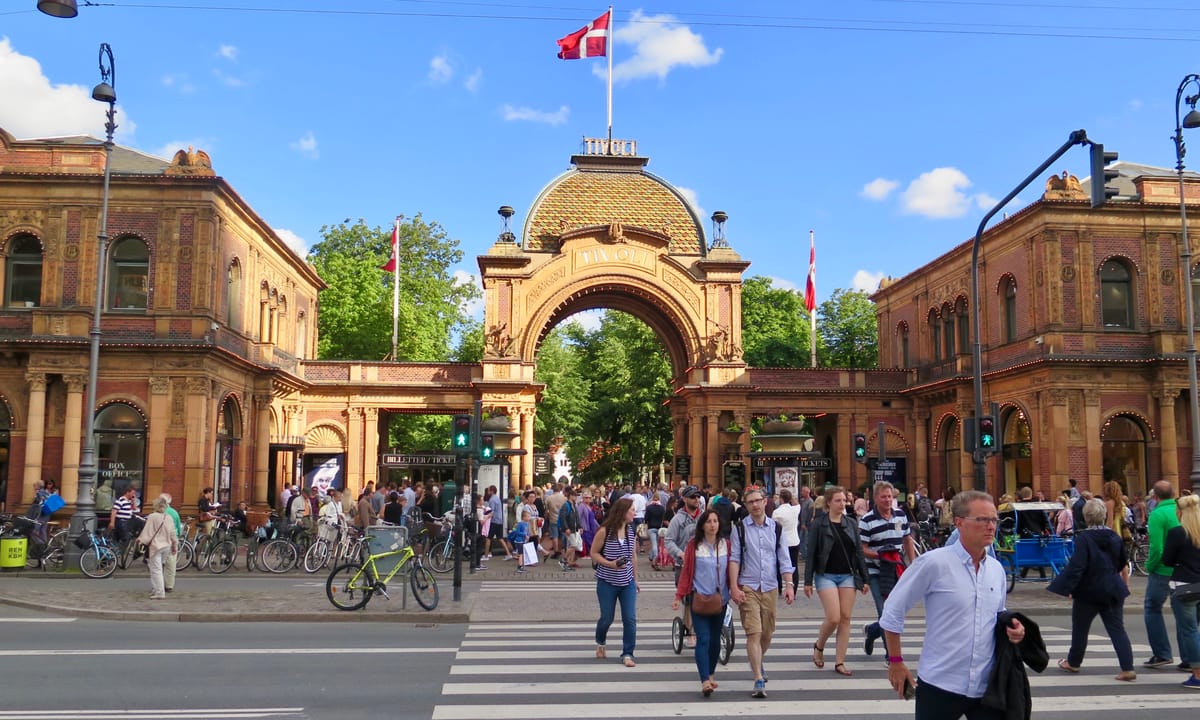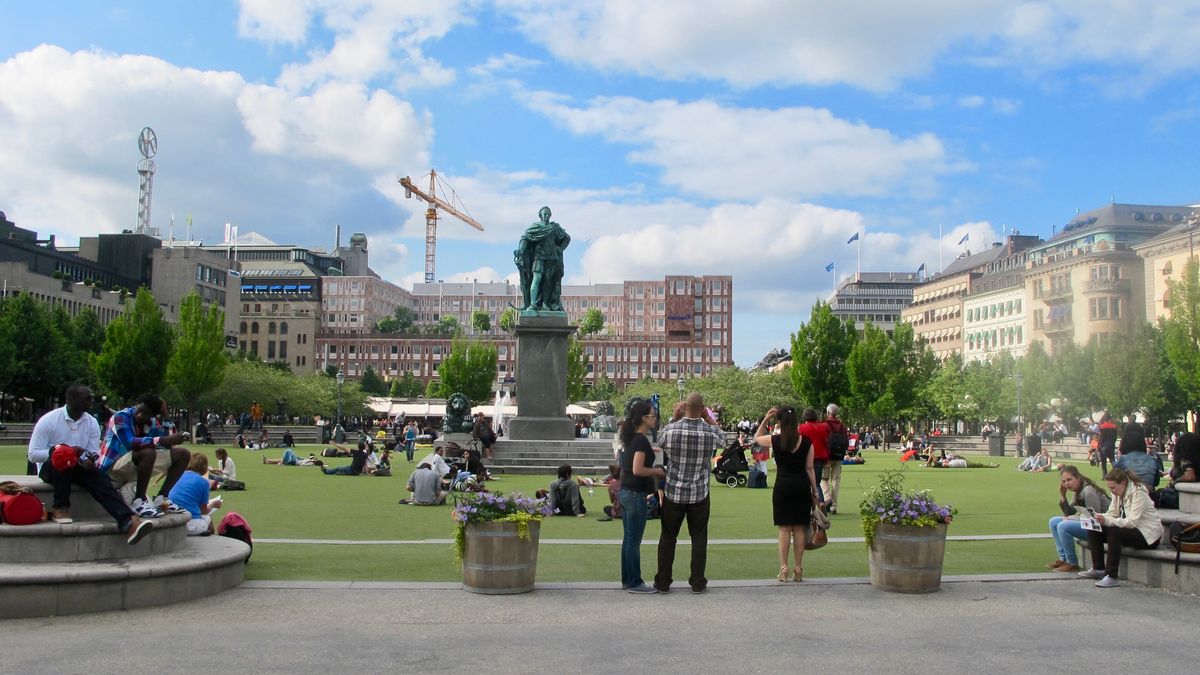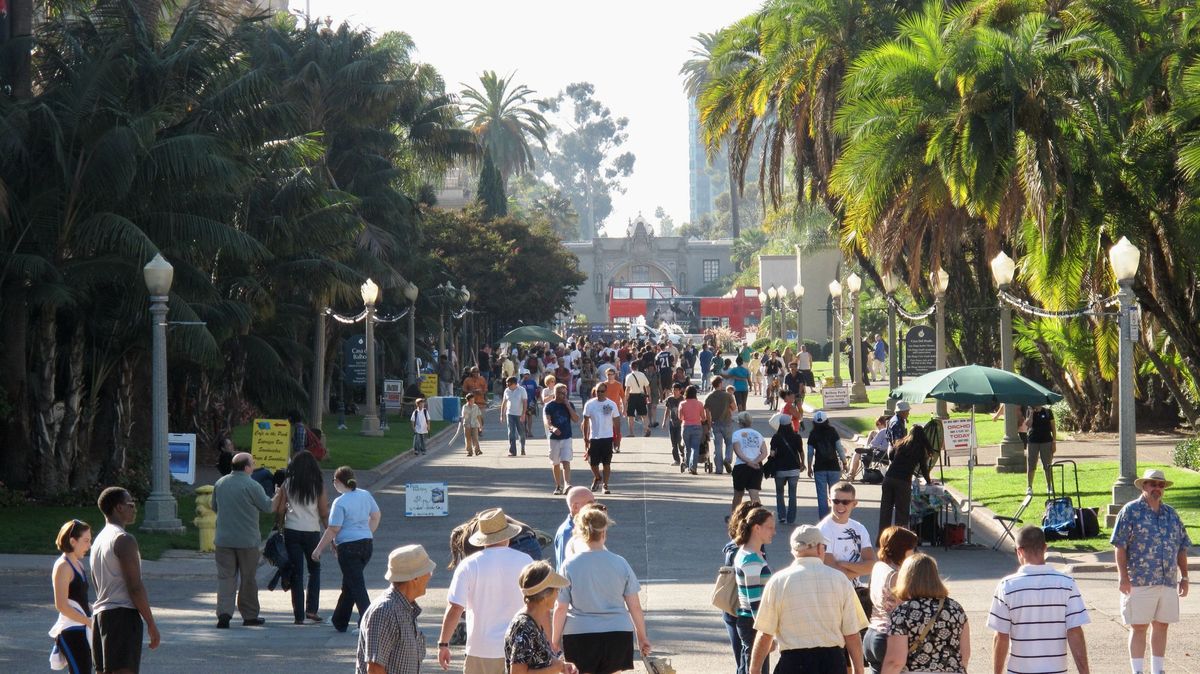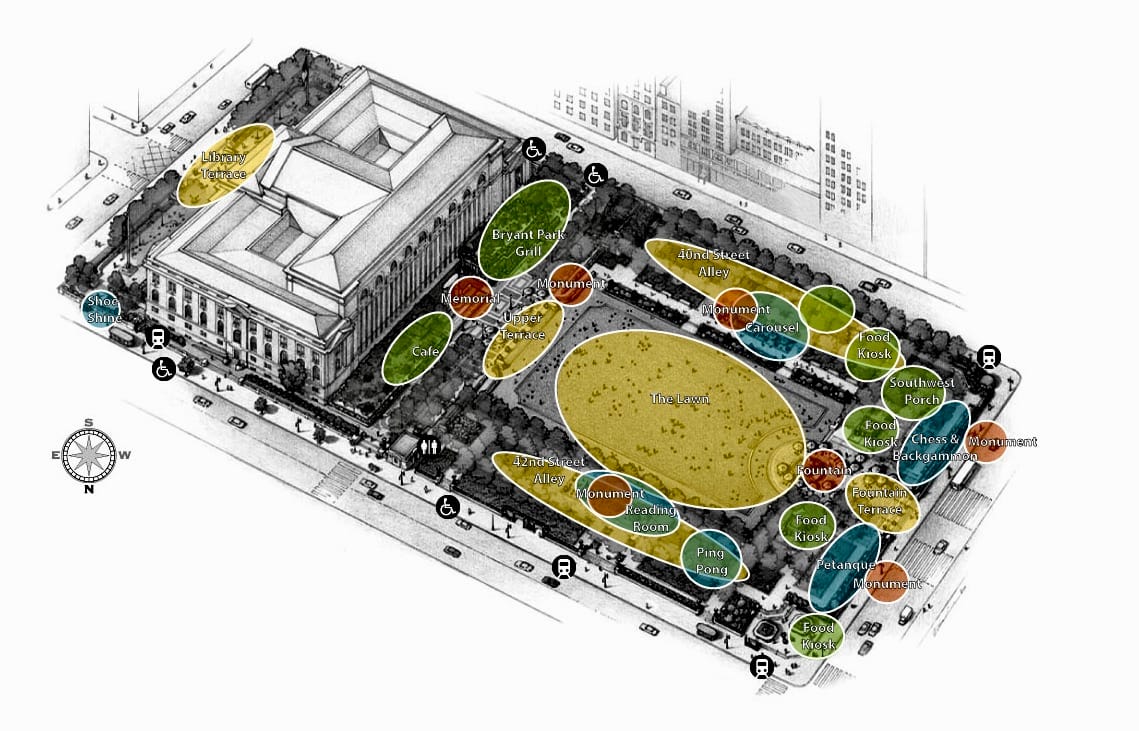How Bryant Park and other Midtown destinations like Rockefeller Center, Bryant Park, Port Authority Bus Terminal, and Times Square were transformed from spaces people avoided to destinations people flocked to through Placemaking
Placemaking
Today, the term Placemaking is used around the world, and is credited as saving and defining countless communities by revitalizing their shared places such as squares, sidewalks, markets, and parks. We have spent over 50 years working on Placemaking through our organizations Project for Public Spaces, PlacemakingX, and Social Life Project. It all started with four revitalization efforts in Midtown Manhattan – Bryant Park, Rockefeller Center, Port Authority Bus Terminal, and Times Square. They led the way for the transformation of Midtown Manhattan in the 70s and showed the world the power of Placemaking.
The goal of Placemaking is to repair significantly underperforming public places though catalytic interventions and activations which have widespread ripple effects on their surroundings. Programming and Lighter Quicker Cheaper (LQC) interventions were the key to transforming iconic NYC destinations and hundreds of other public places since.
Bryant Park in particular has evolved and continues to thrive – the "gold standard" that gets to the heart of what Placemaking is. Bryant Park shows how a once dull and overlooked place can become a beloved destination through dynamic activation, LQCs, and diverse programming.
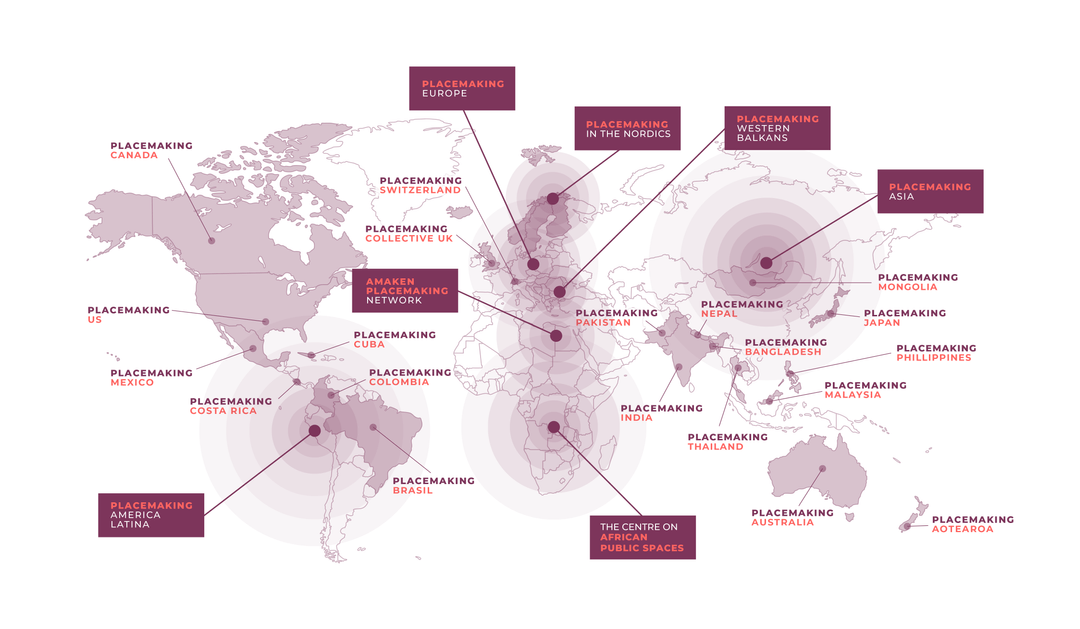
Bryant Park's History
Located in the heart of Midtown Manhattan, Bryant Park used to be little more than a deserted patch of grass with barely any amenities there to attract visitation. Because of its lack of people, wholesome activity, and the low visibility from the outside in, it became a hotbed for unsavory and illegal behaviors.
Multiple drug dealing groups worked in different parts of the park, discouraging people from entering or visiting. Litter was strewn on the grass and graffiti was sprayed across the monuments. At one point it even earned the nickname "Needle Park." It needed to drastically change in order to survive and thrive.
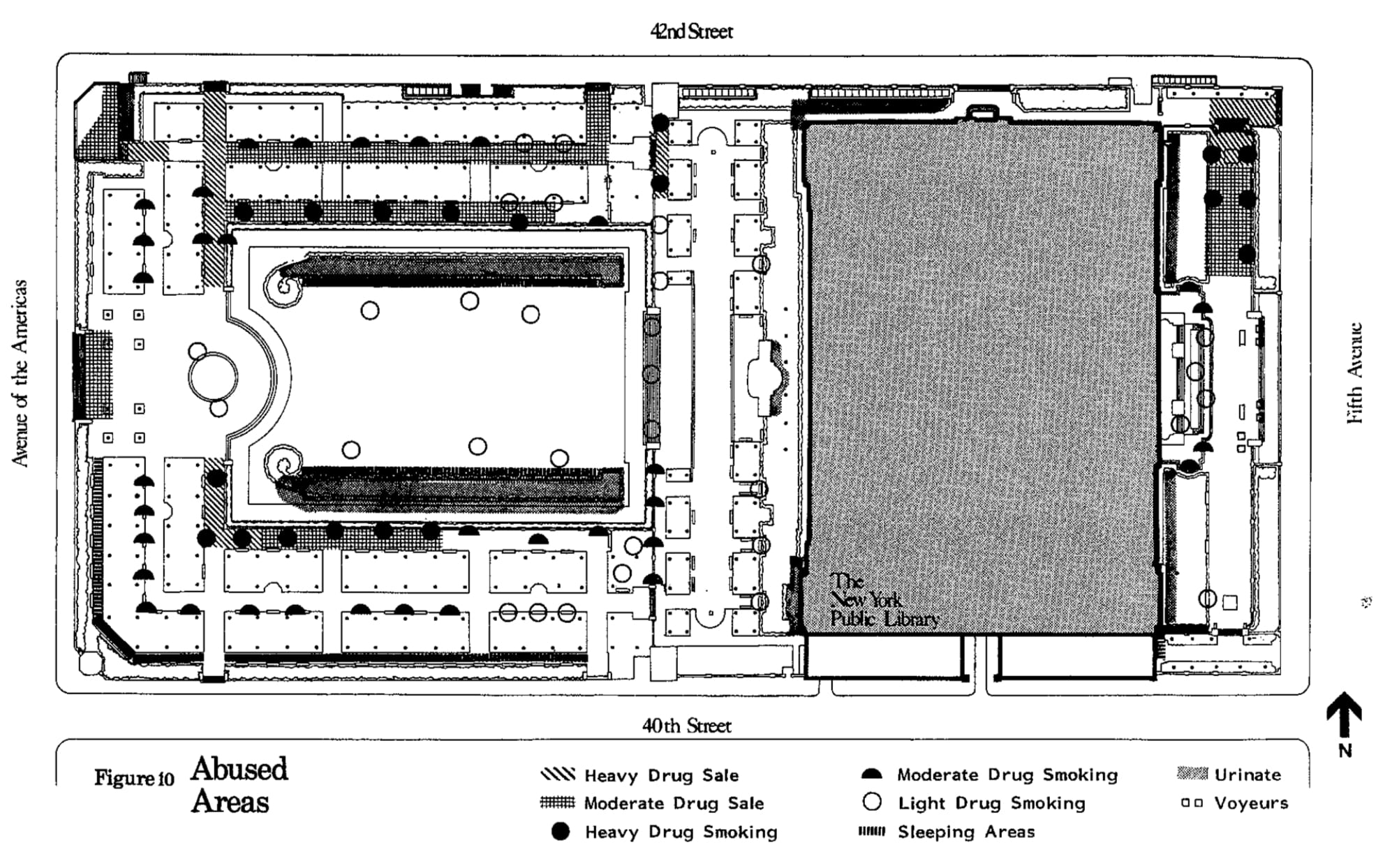
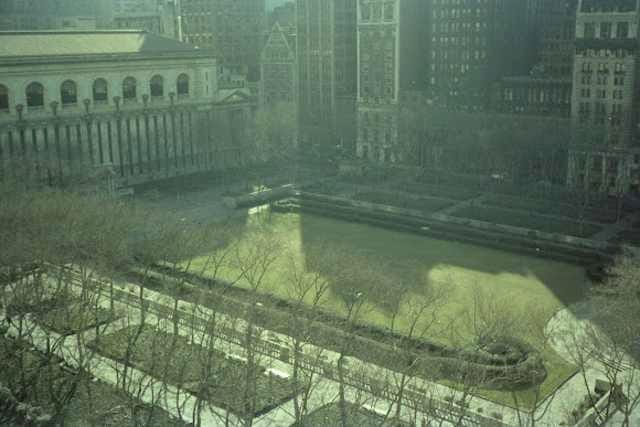
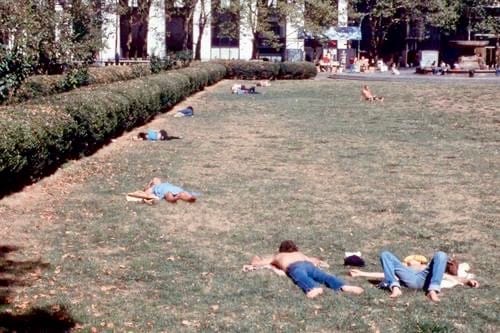
Photo source: Gothamist Historic view pre-1970
PPS's Role
After founding Project for Public Spaces in 1975, Bryant Park was one of the early projects we worked on. We had been working with renowned urbanist and sociologist William "Holly" Whyte evaluating the park which had become a haven for drug use and dealing. Our goal was to turn it into a true heart of Midtown where everyone could feel welcome, relaxed, safe, and joyful. As PPS, we came in with a strategy for activation to save it.
We did not think of ourselves as "designers" but rather as a kind of repair crew. We focused on replacing bad uses with good ones, such as eating ice cream, reading books, and relaxing with friends. Book stalls, games, and various events like concerts reprogrammed areas that were dominated by drug dealing and homelessness into hubs of positive activity. The park was given a new lease on life.
The primary intervention we advocated for was programming. Today, Bryant Park is a magnificent and flourishing public space, mainly because it is programmed from top to bottom, year-round. Dan Biederman, head of the Bryant Park Corporation, was the "Master Re-builder" behind this phenomenal transformation. He is a graduate of Harvard Business School and while he had no formal design training, he had a vision for what the park could become and how to make it so. Bryant Park is a testament to how a place doesn't have to change structurally to be completely and wonderfully transformed.
The Bones of the Park
The design of a space is not nearly as important as what happens there. That said, understanding the space's layout and how it connects to its surroundings helps reveal opportunities for improvement and activation. Bryant Park has a simple design that has remained more or less the same for nearly the past century. It has a large main lawn (perfect for events and picnicking), alleys lined with shade-throwing trees (perfect for seating and cafés), a fountain (perfect for meeting friends at), and various gardens and monuments.
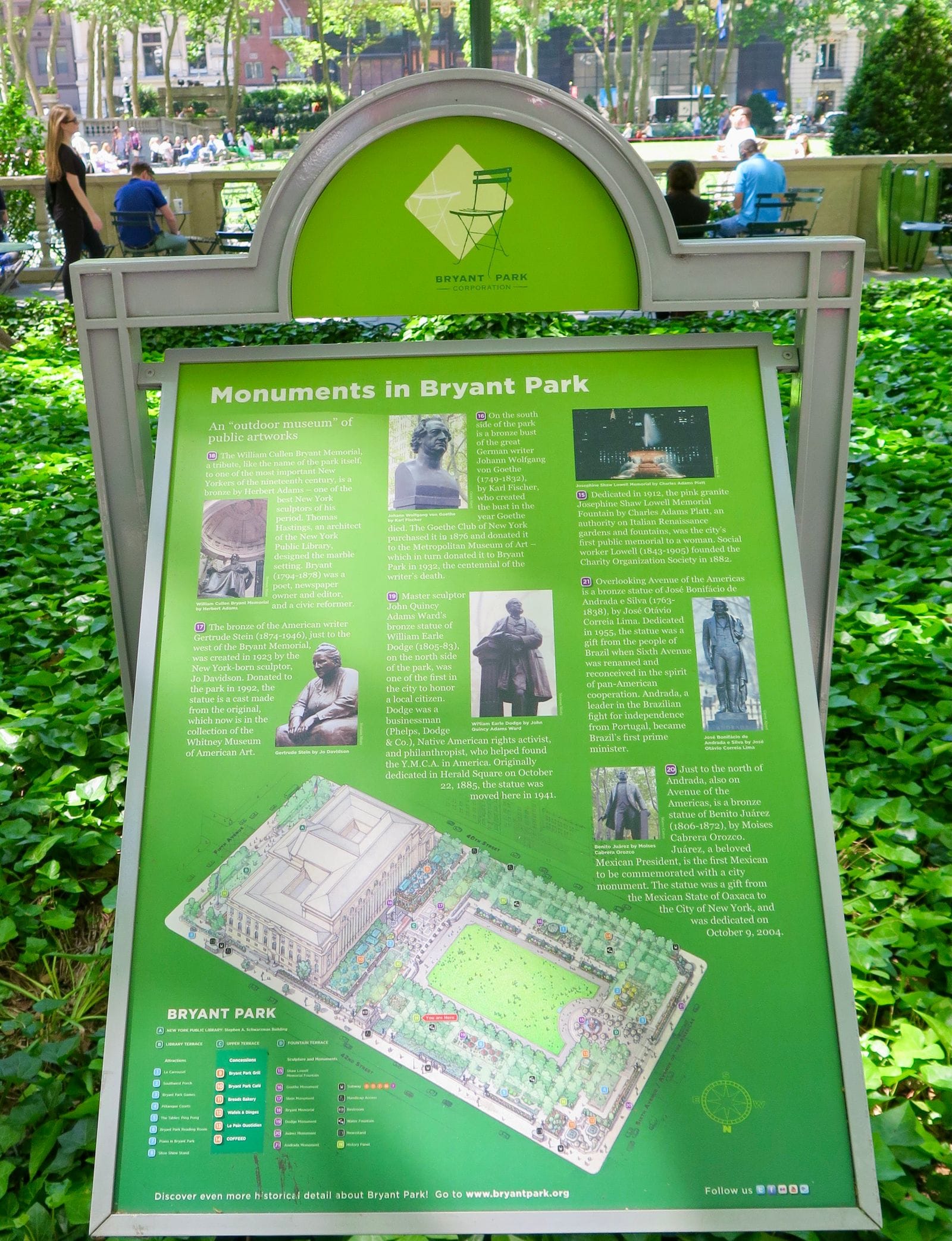
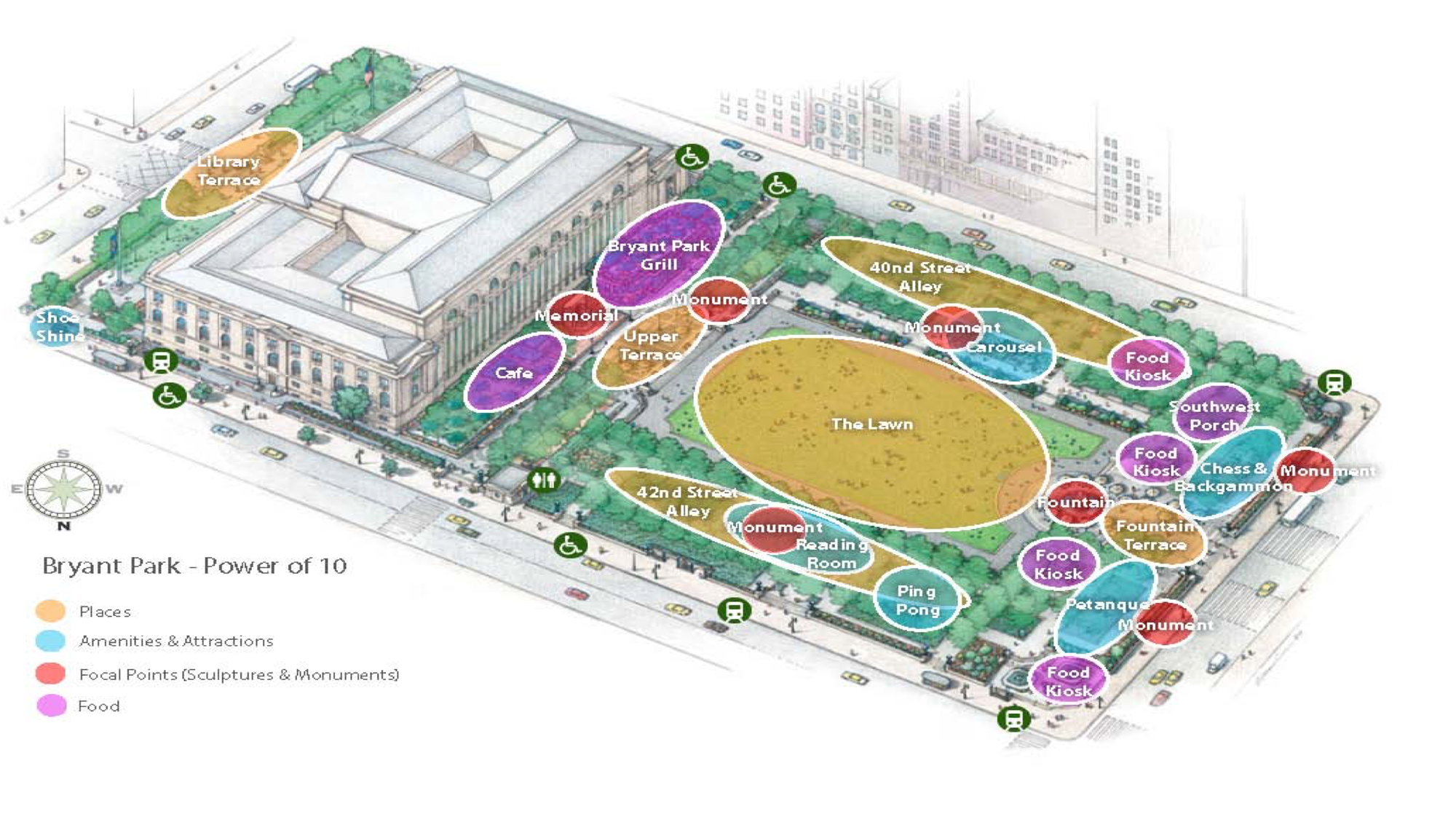
Structurally, the high walls that once blocked the views of what was going on inside the park made it so the space didn't feel welcoming. These walls created a barrier between the park and the surrounding community. They also created dark and hidden corners that fostered conditions which supported illicit activity. Taking down these walls and redesigning the entrances to have a more open and inviting layout was a key structural change that opened the park up and encouraged visitation.
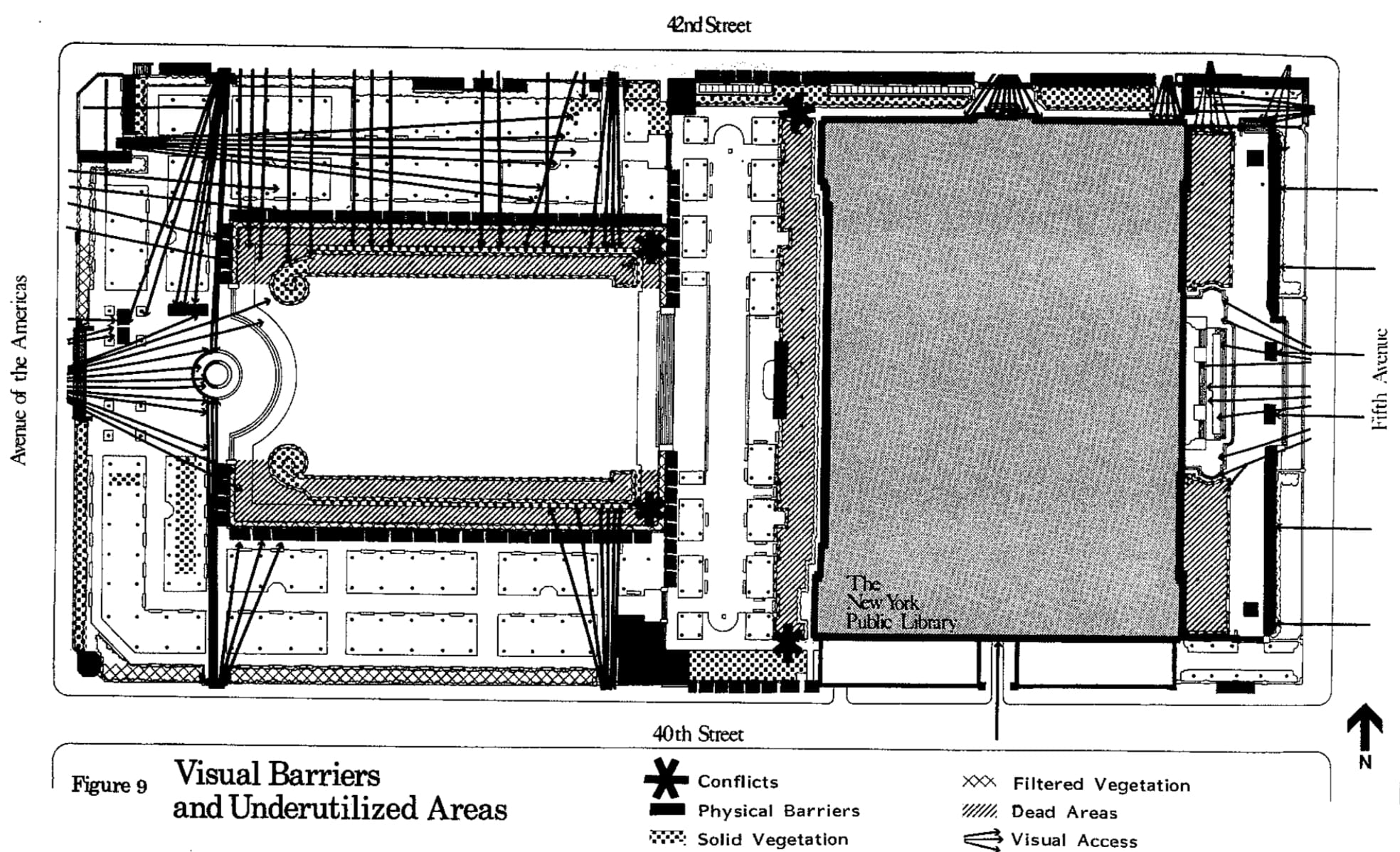
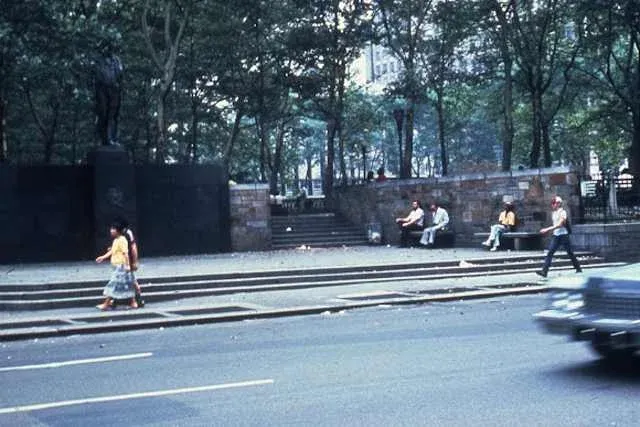
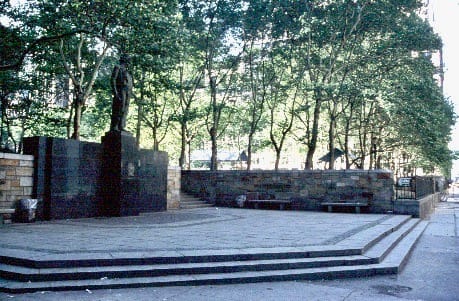
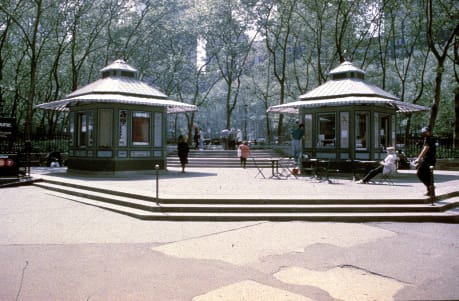
By adding more seating and umbrellas and refreshment areas, the entrances "reached out" further into the street, inviting people in.
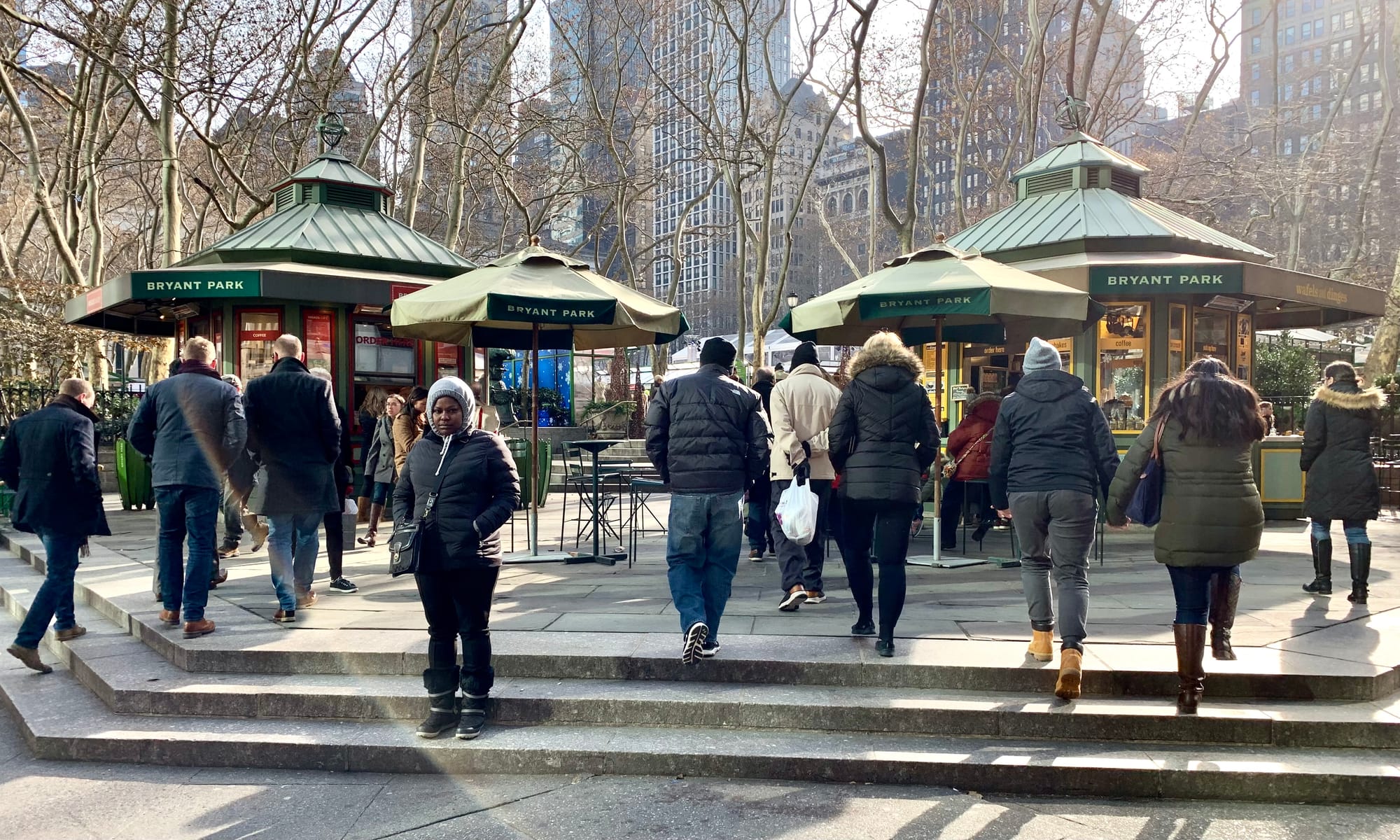
Focal Points
Highlighting the existing focal points of the park and adding more of them was another important change to make it visitation-friendly. The fountain has been in Bryant Park since the beginning and naturally attracts people the way landmarks – especially water features – always do. But without places to sit around it, it was just something to take a photo of and move on. Once seating and refreshment areas were added in its vicinity, the fountain became a true destination and the defining feature of the park.
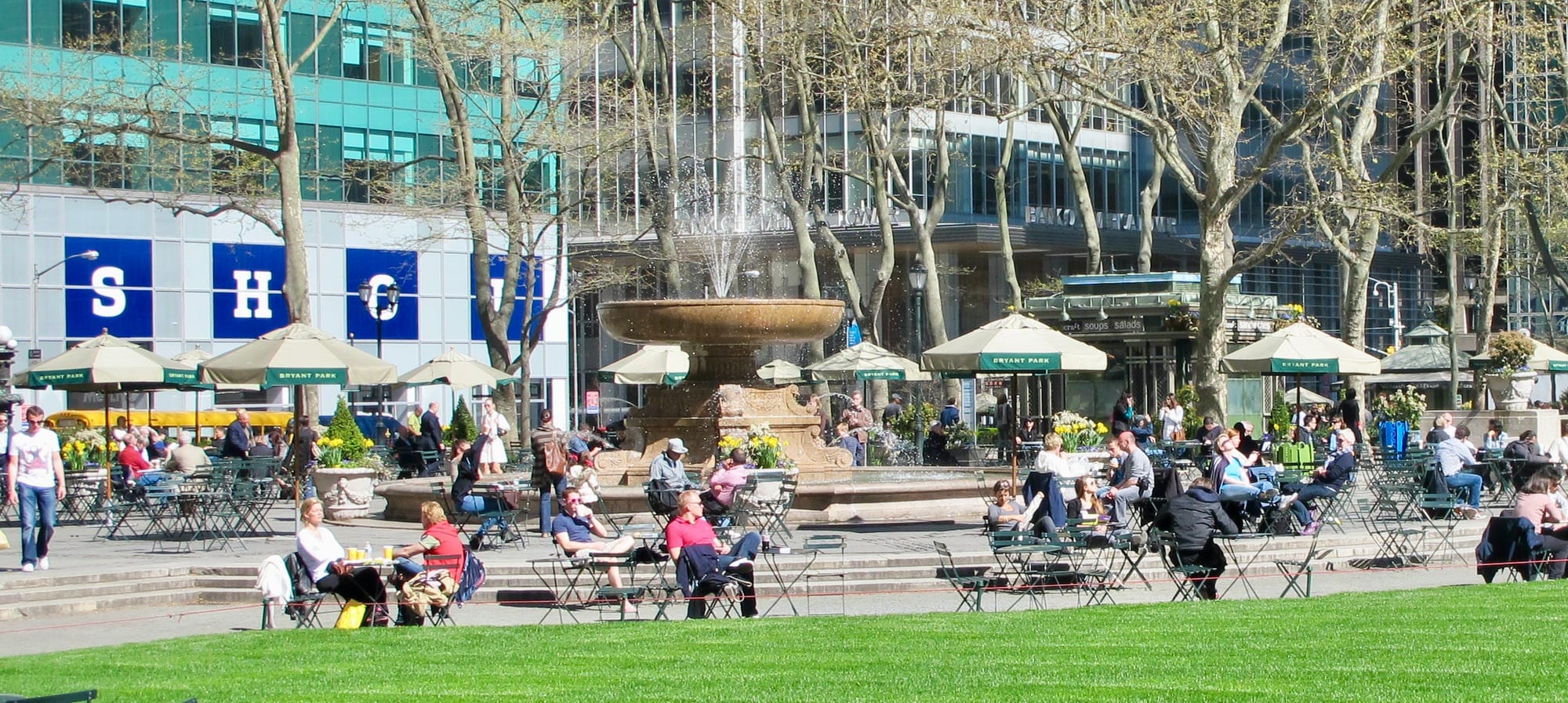
Other focal points that give character to the park grounds include the picturesque carousel that people of all ages love to hop on, the monument by the library, and temporary focal points like the Winter Lounge during ice skating season.
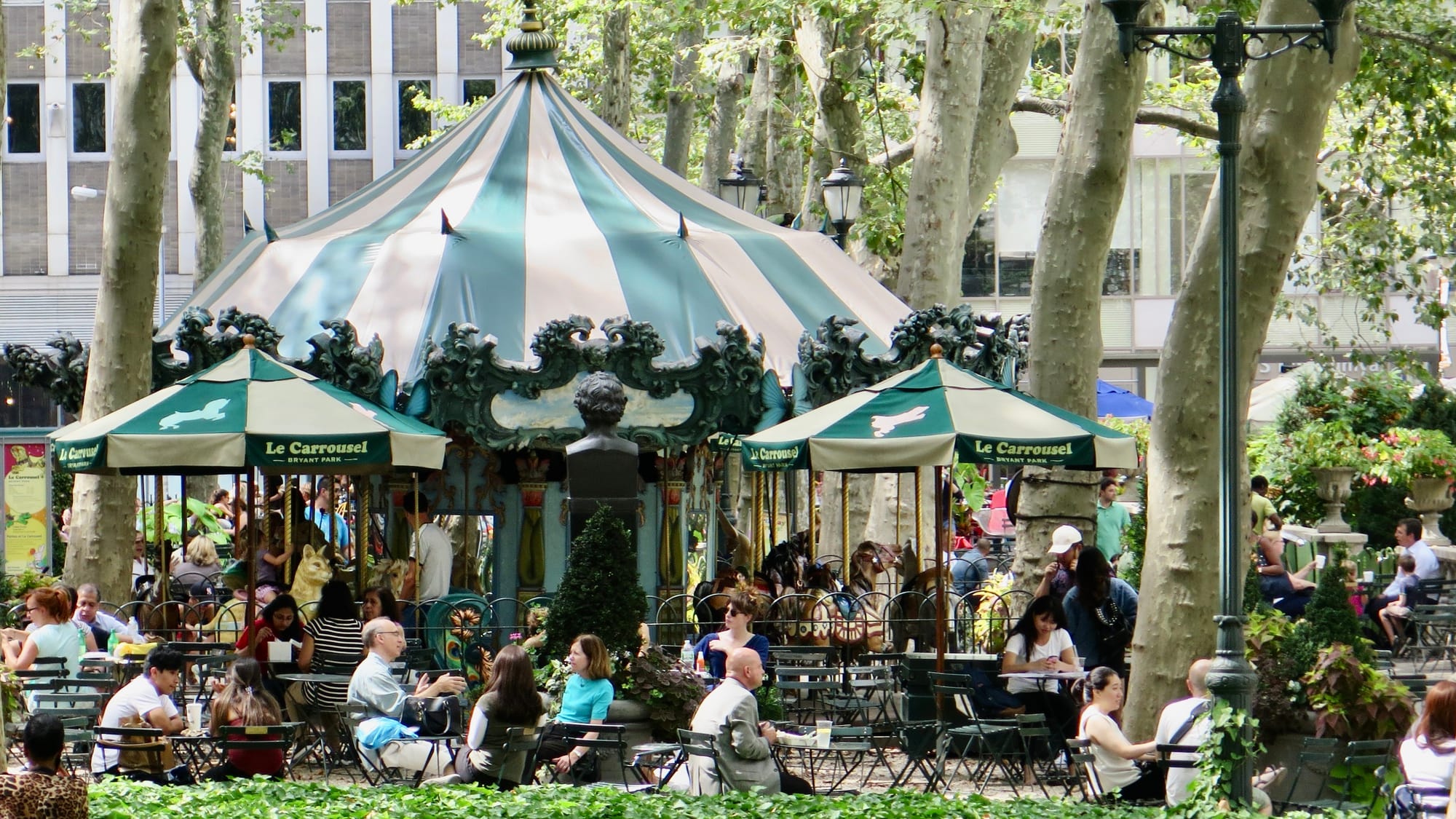
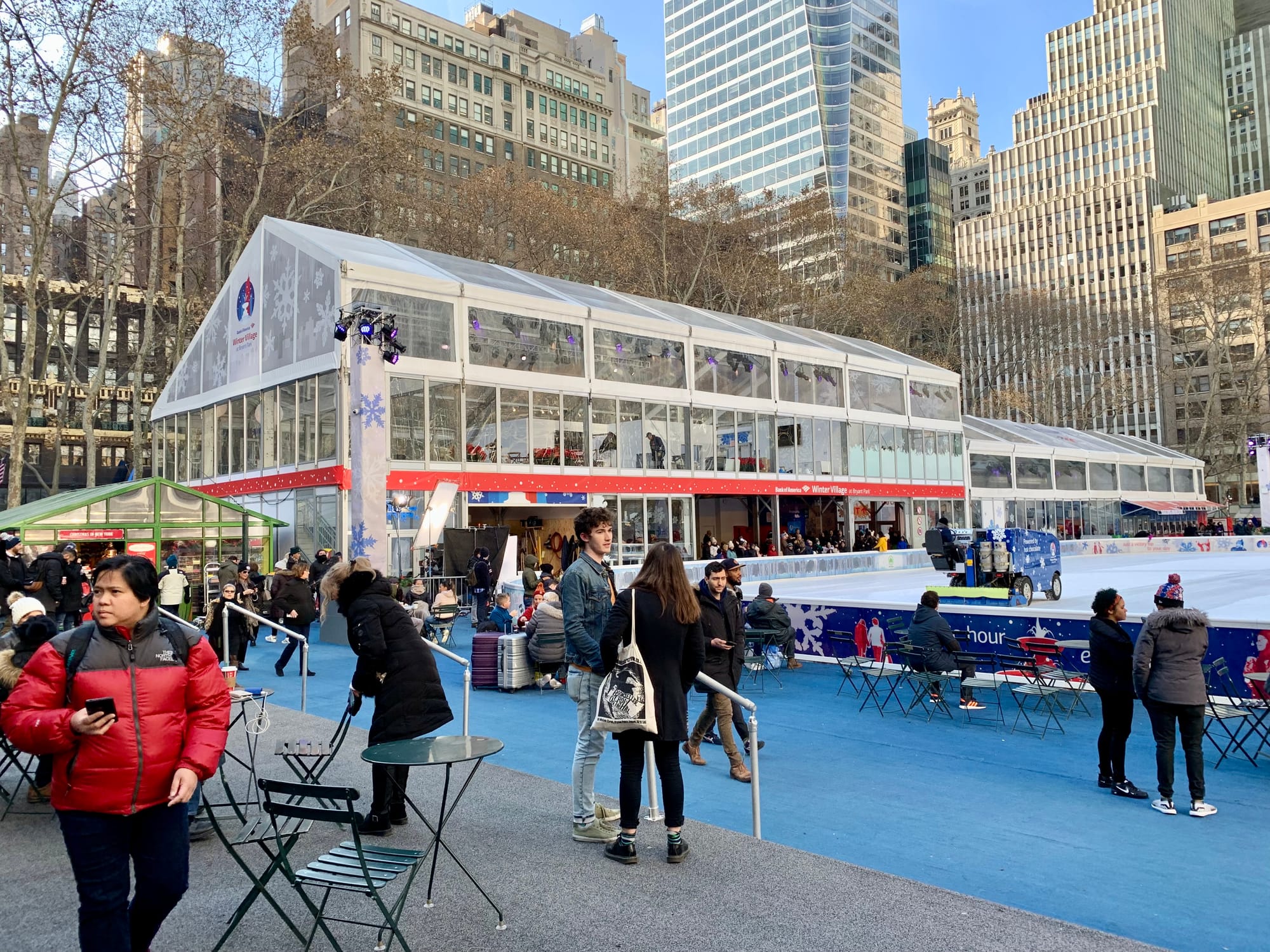
Amenities
The key to making places great is filling them with amenities that make people want to be there. Amenities add comfort, pleasure, convenience, safety, and joy to a place. If a public space is just a field, as Bryant Park initially was and as many "parks" today still are, then there is nothing that makes people want to go and spend time there. Amenities are what draw us into a space and inspire us to stick around. Bryant Park has many.
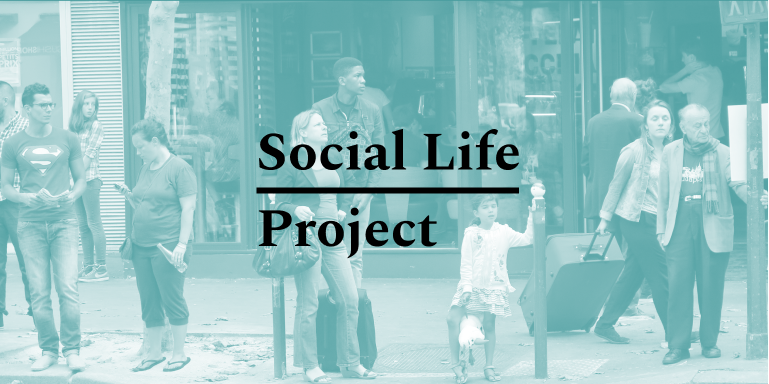
Seating
As with other famous public spaces like Luxembourg Gardens and Harvard Yard, Bryant Park's chairs are one of its most iconic and beloved amenities. These chairs, because they are easily moveable, give people the flexibility to sit where and how they want, either alone or with friends. Their green color blends pleasantly in with the greenery of the park and their design is lightweight and comfortable. They have transformed the park from a place to walk through into a place to hang out at.
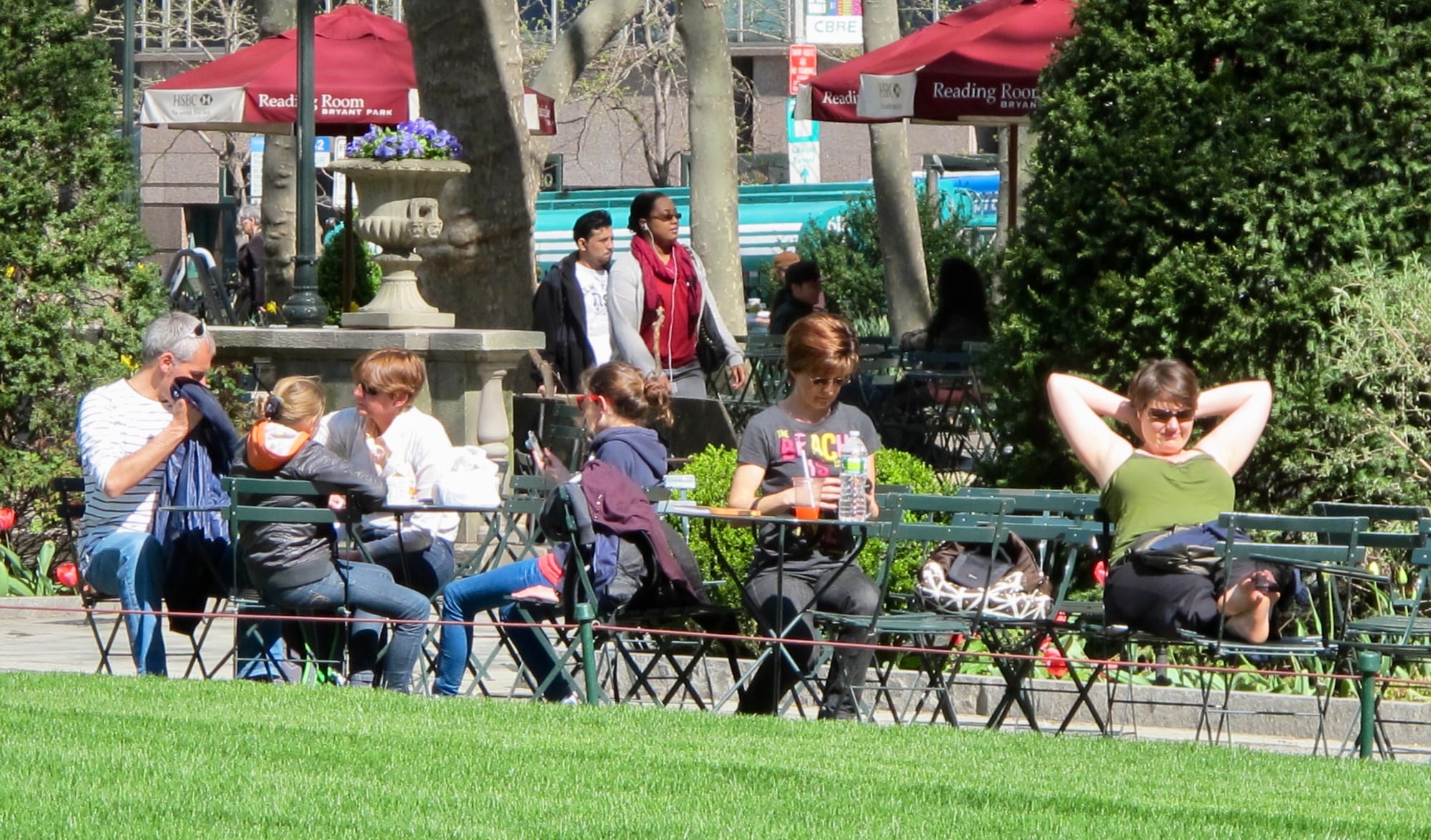
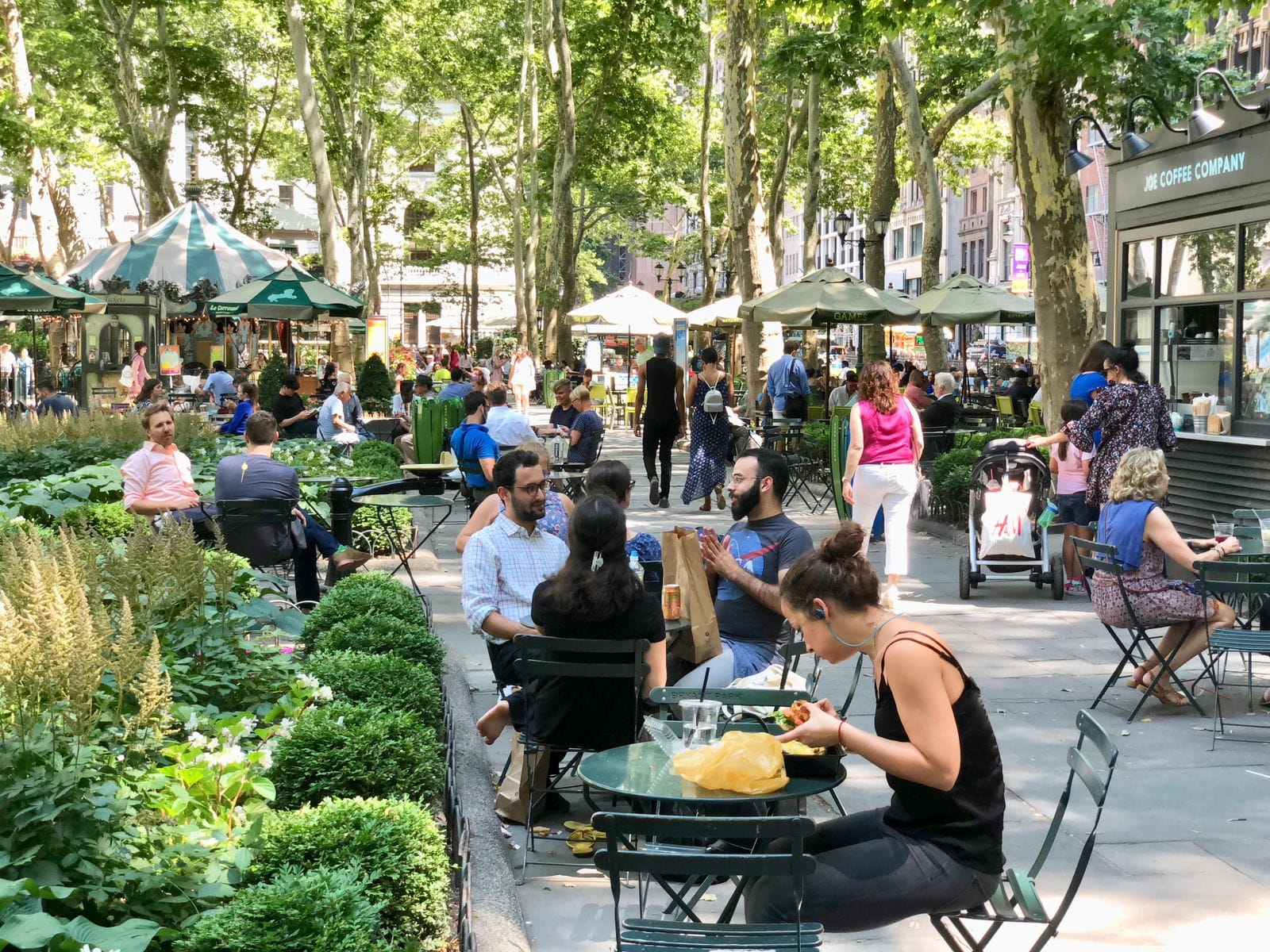
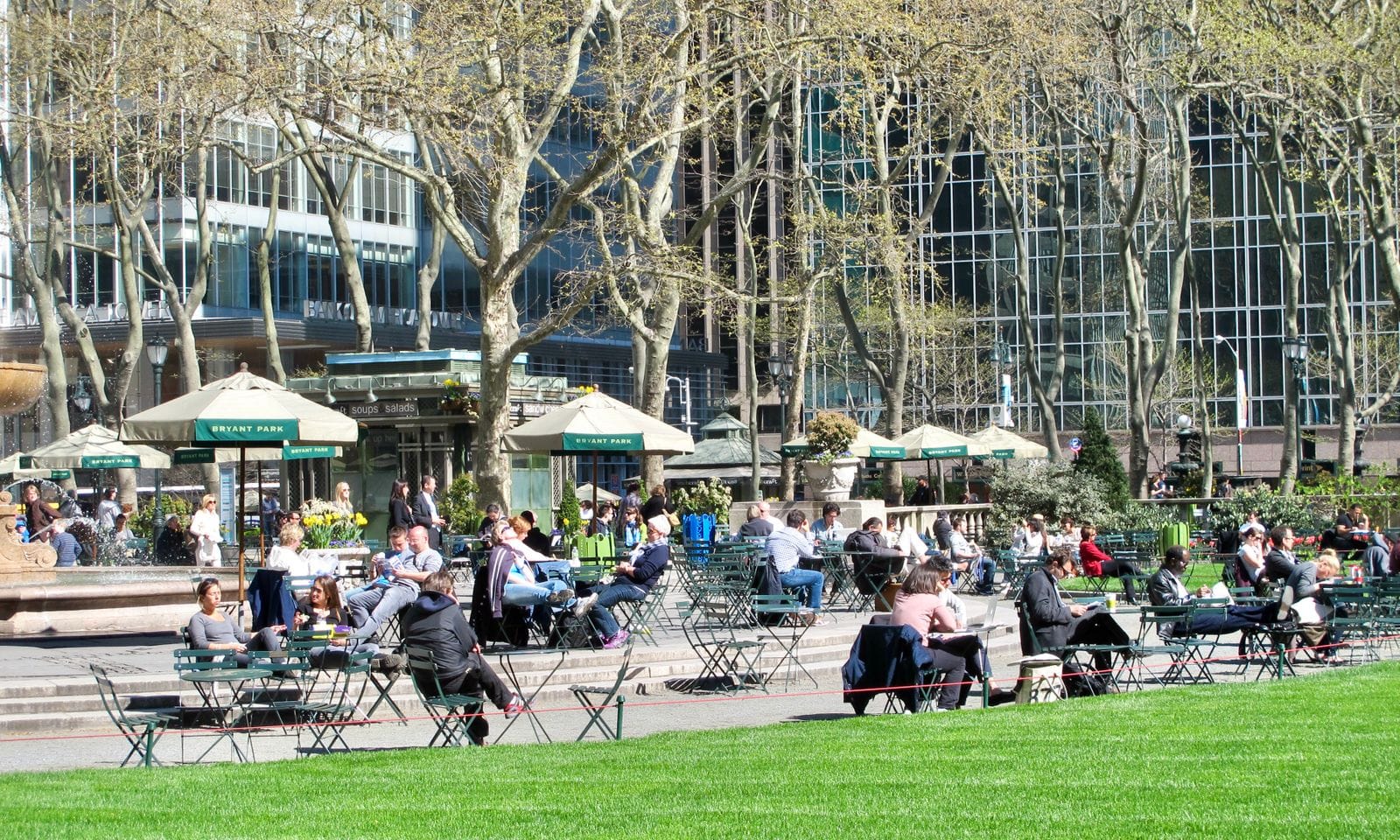
Cafés, bars, and restaurants
One of the most common things people want to do when they are out and about is get something to eat or drink. What's more enjoyable than getting a hot cocoa on a cold day or an ice cream on a hot one? When you add places for food and refreshment to a public place, you almost always attract visitation. In Bryant Park, a variety of cafés, bars, and restaurants have been set up for every mood and season.
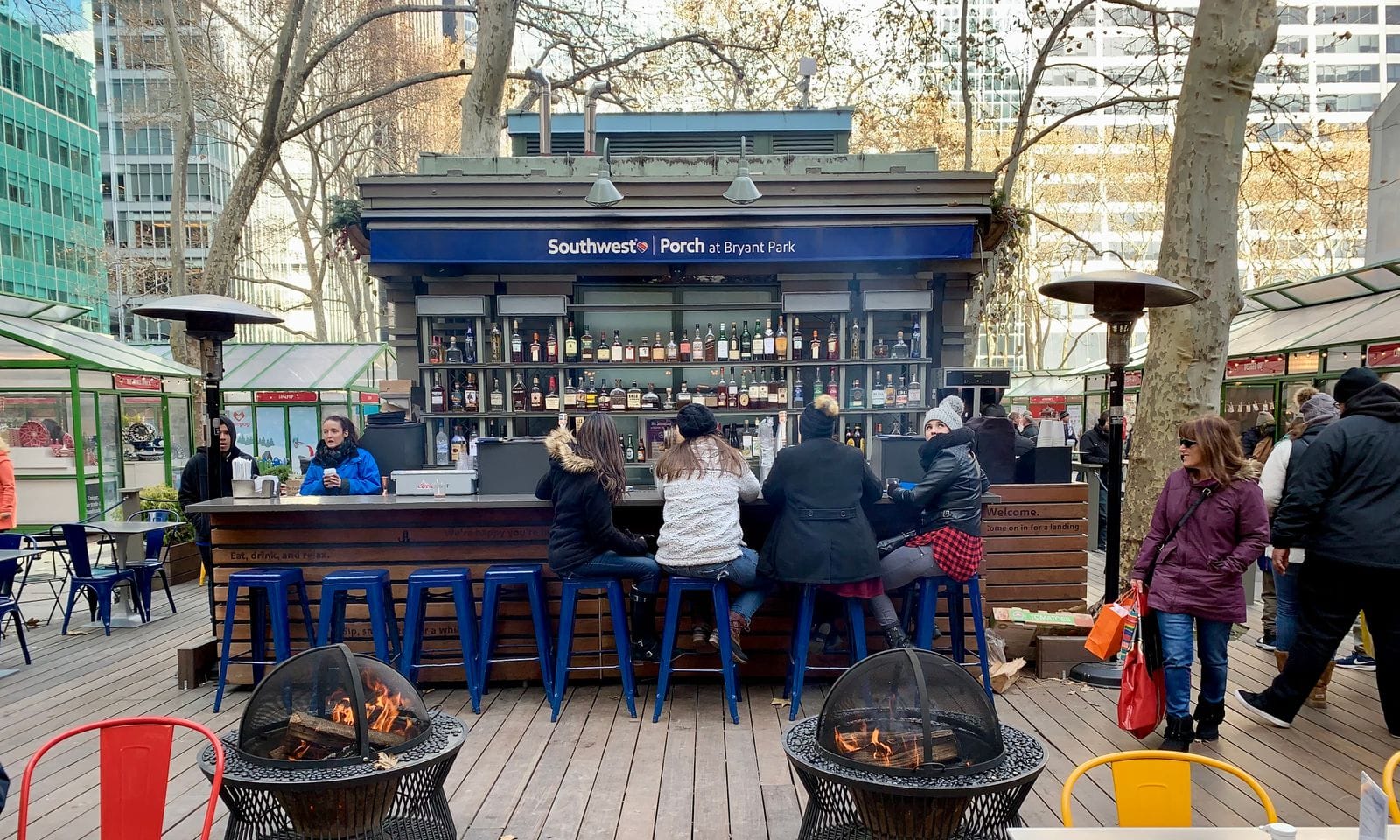
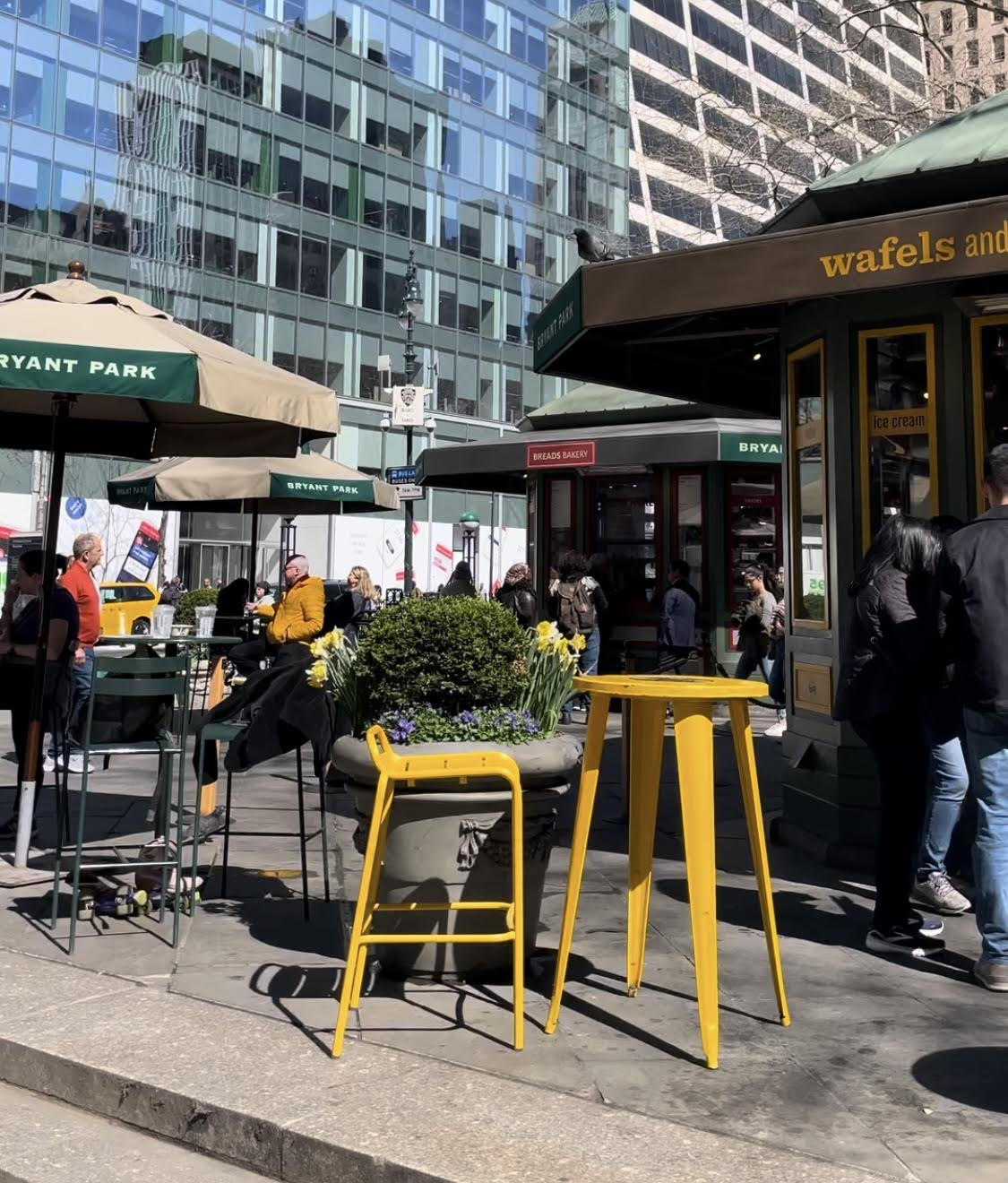
The restaurant by the library, as the main business in the park, is a key anchor and one of the park's major focal points. What's more, a portion of its profits go to managing and maintaining the space. This is a great strategy to fund the upkeep of a public space and create a symbiotic relationship between the public and private realms, both of which benefit from increased visitation.
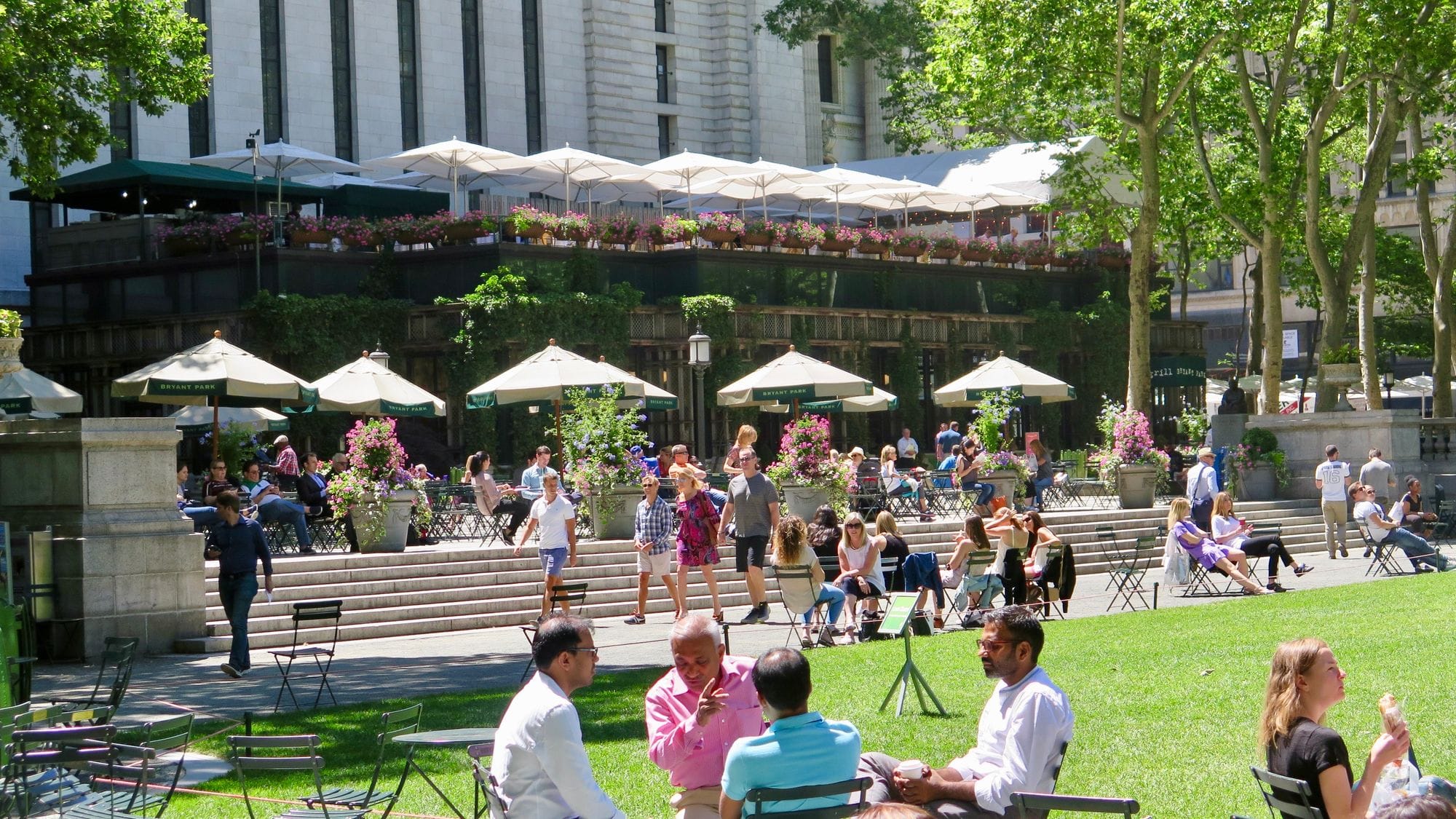
Shade
Bryant Park's ample trees create a pleasant and enjoyable outdoor environment. Without them, the sun would be relentlessly beating down and discouraging people from hanging out in the fresh air. Now, rows and rows of seats and tables are laid out in the alleys under the leafy crowns of the trees and people feel comfortable enjoying the park from morning to evening, summer to winter.
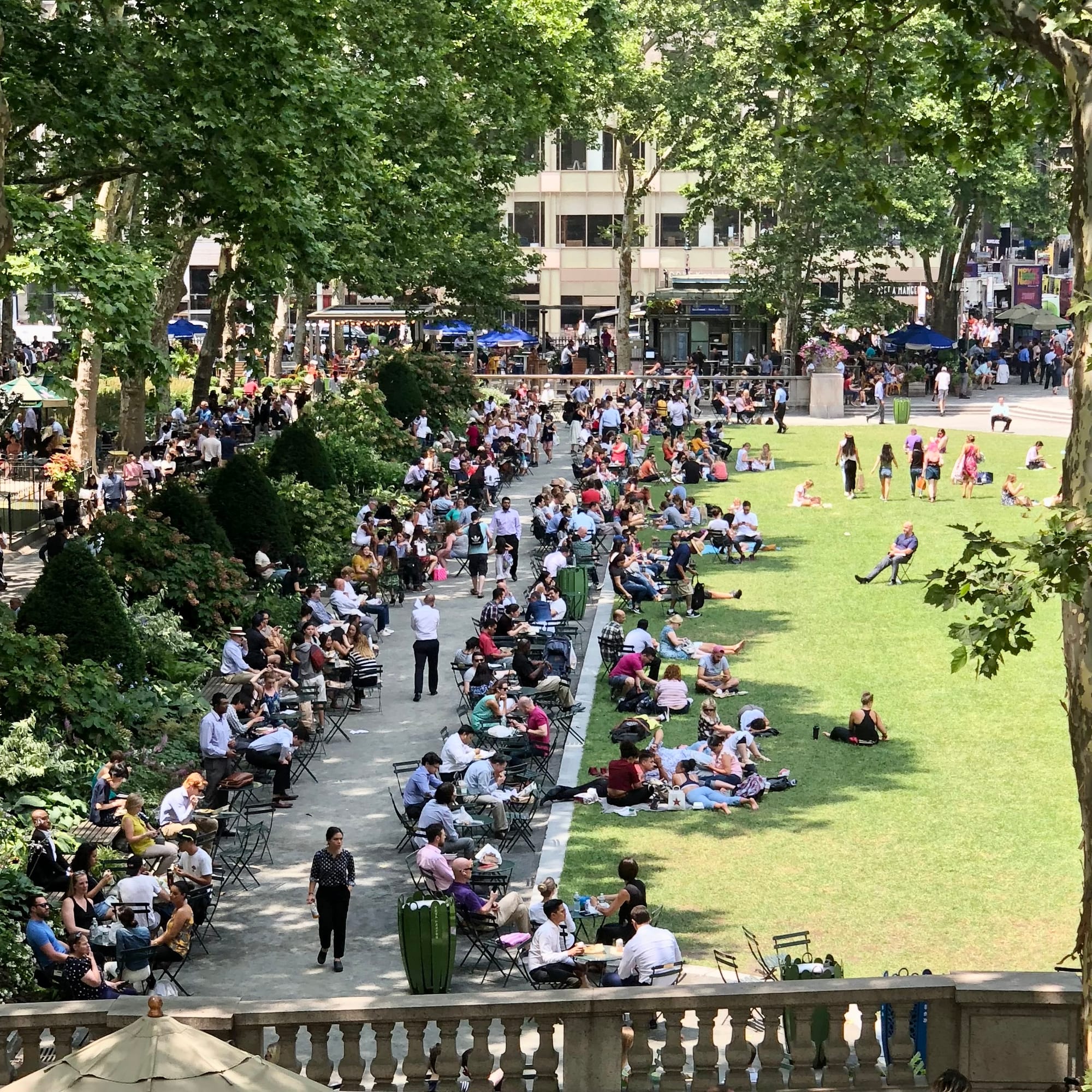
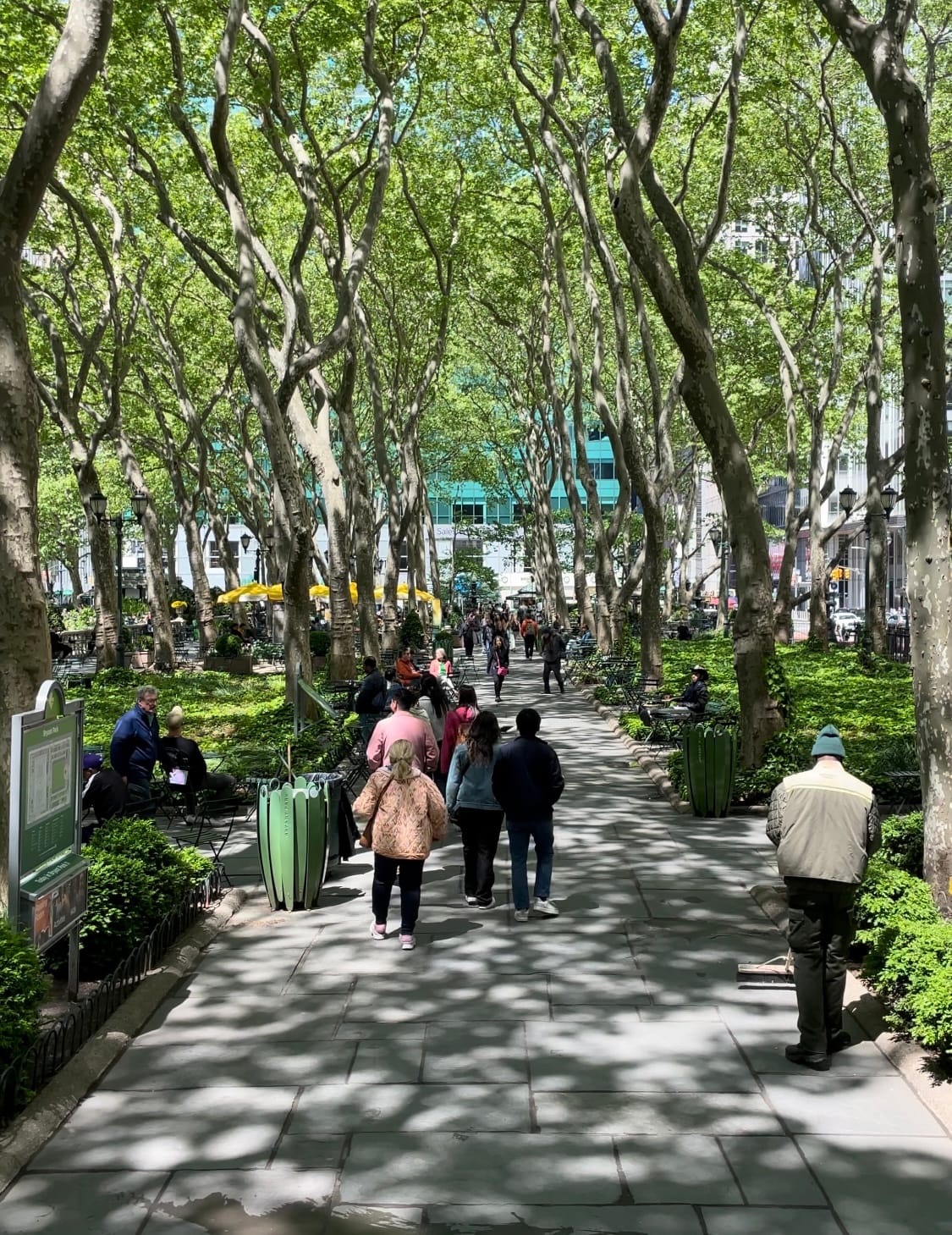
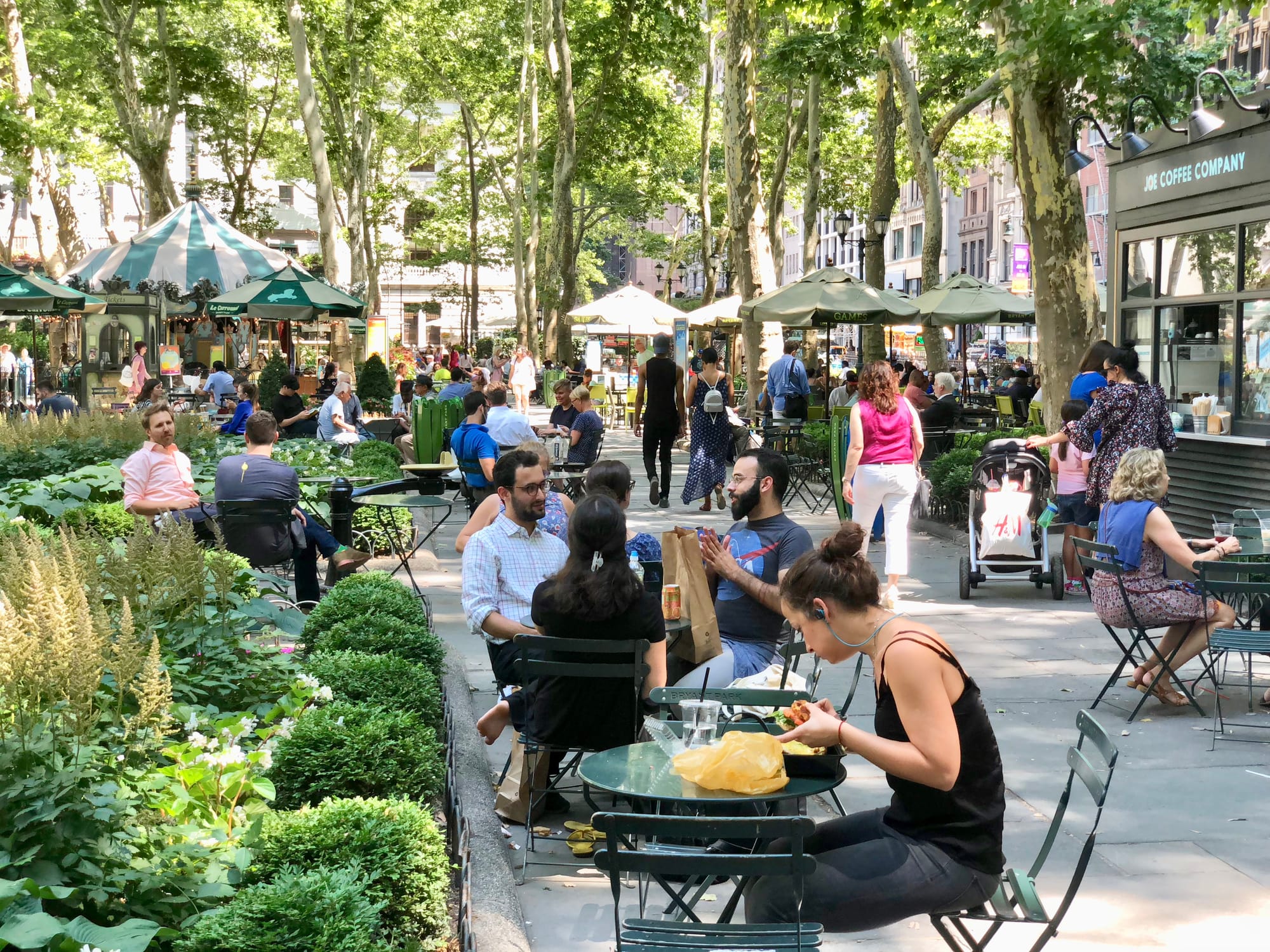
"The" Bathroom
An often overlooked but incredibly important amenity for public spaces is the bathroom. A bathroom makes it possible and comfortable for people of all ages to spend a longer period of time in a space. Bryant Park's bathrooms are incredibly clean and pleasant and are widely known as the best public bathrooms in the city.
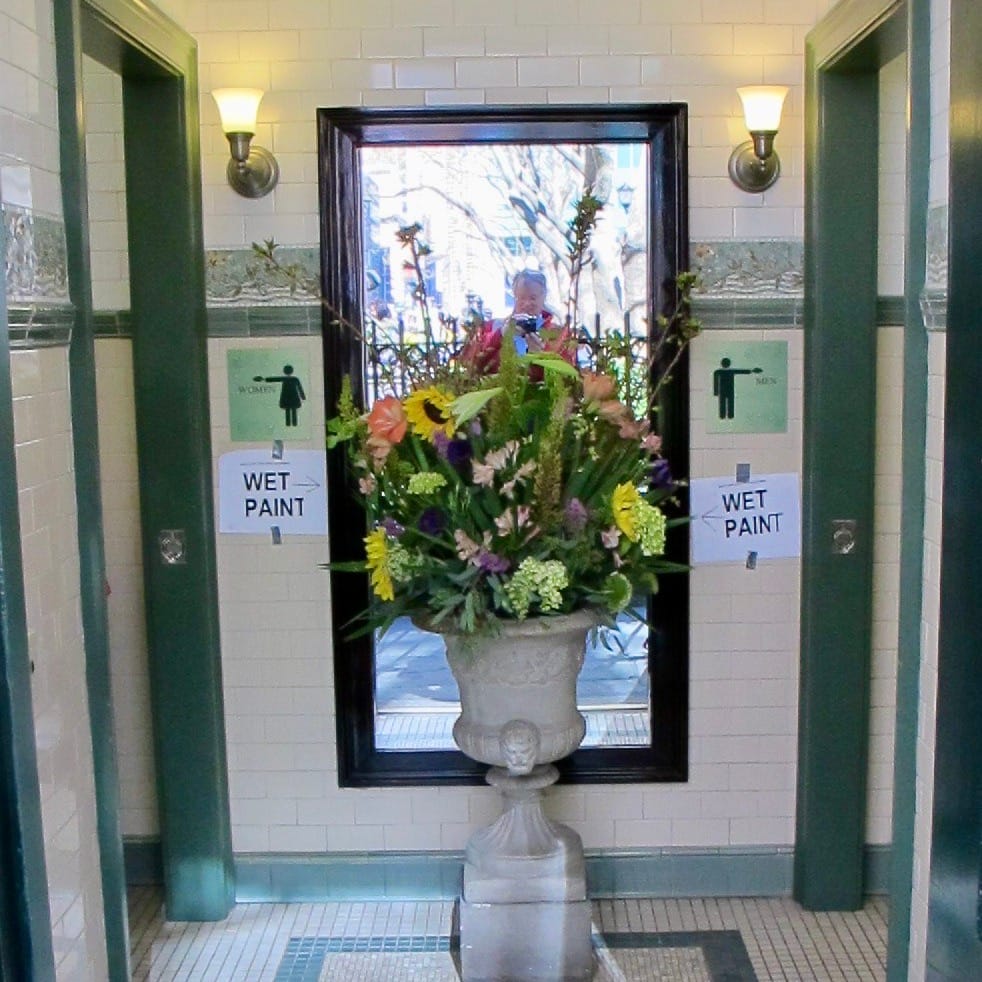
Programming
At the heart of a great public space is programming. People don't only want to look at things like a fountain or consume things like coffee, they want to experience things, especially together with other people. Concerts, competitions, dance classes, festivals, etc. are events that attract crowds everywhere in the world. Activities are what bring people to a place and get them to return again and again. Programming year-round keeps a place busy and buzzing. Bryant Park is one of the best examples of this principle in action.
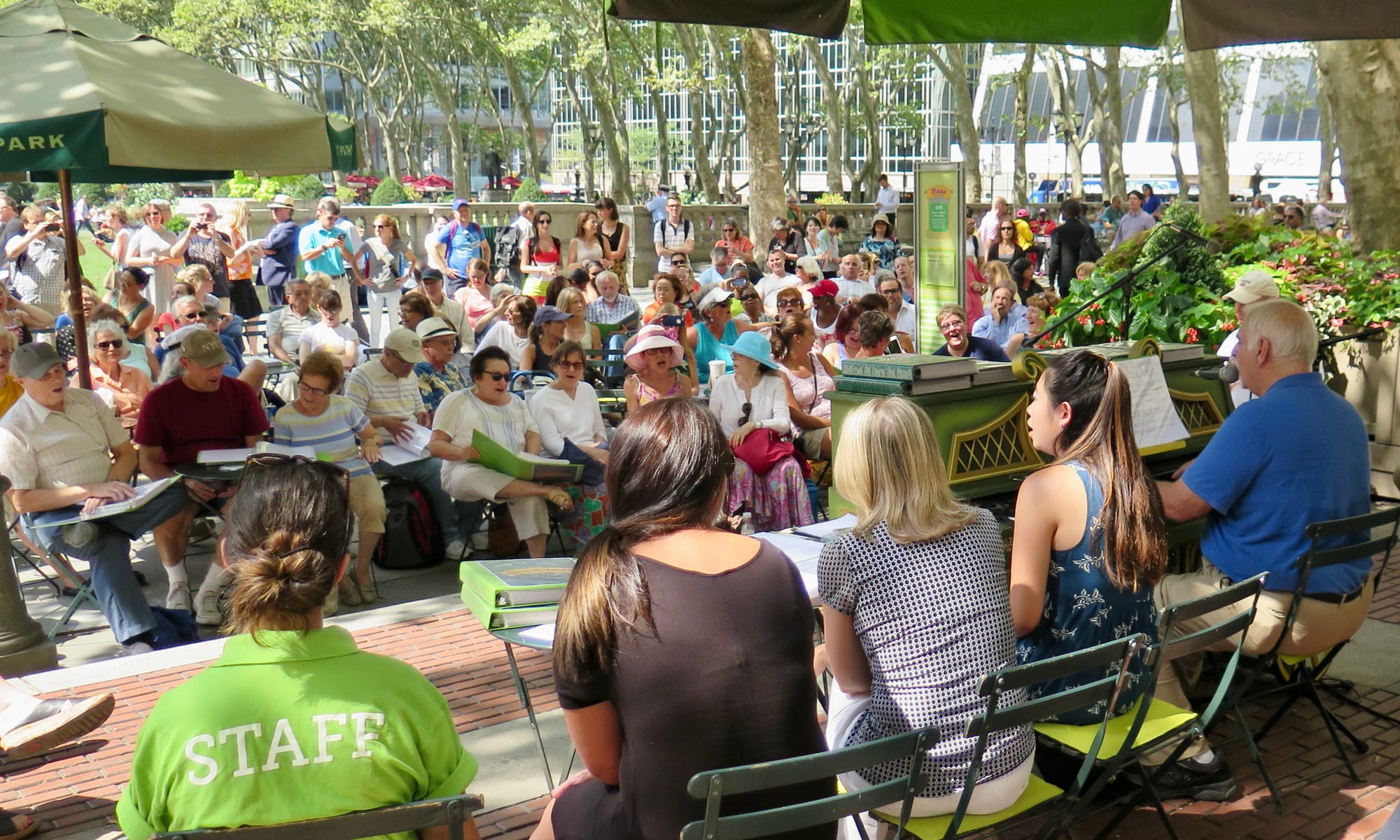
Concerts
The summer marks movie and concert season in Bryant Park. A huge stage is set up on the great lawn and signs display a packed schedule of screenings and performances. When the weather is nice (and often even when it isn't) the park is packed with excited attendees. People bring picnic blankets and snacks and enjoy a memorable show among friends, family, and neighbors.
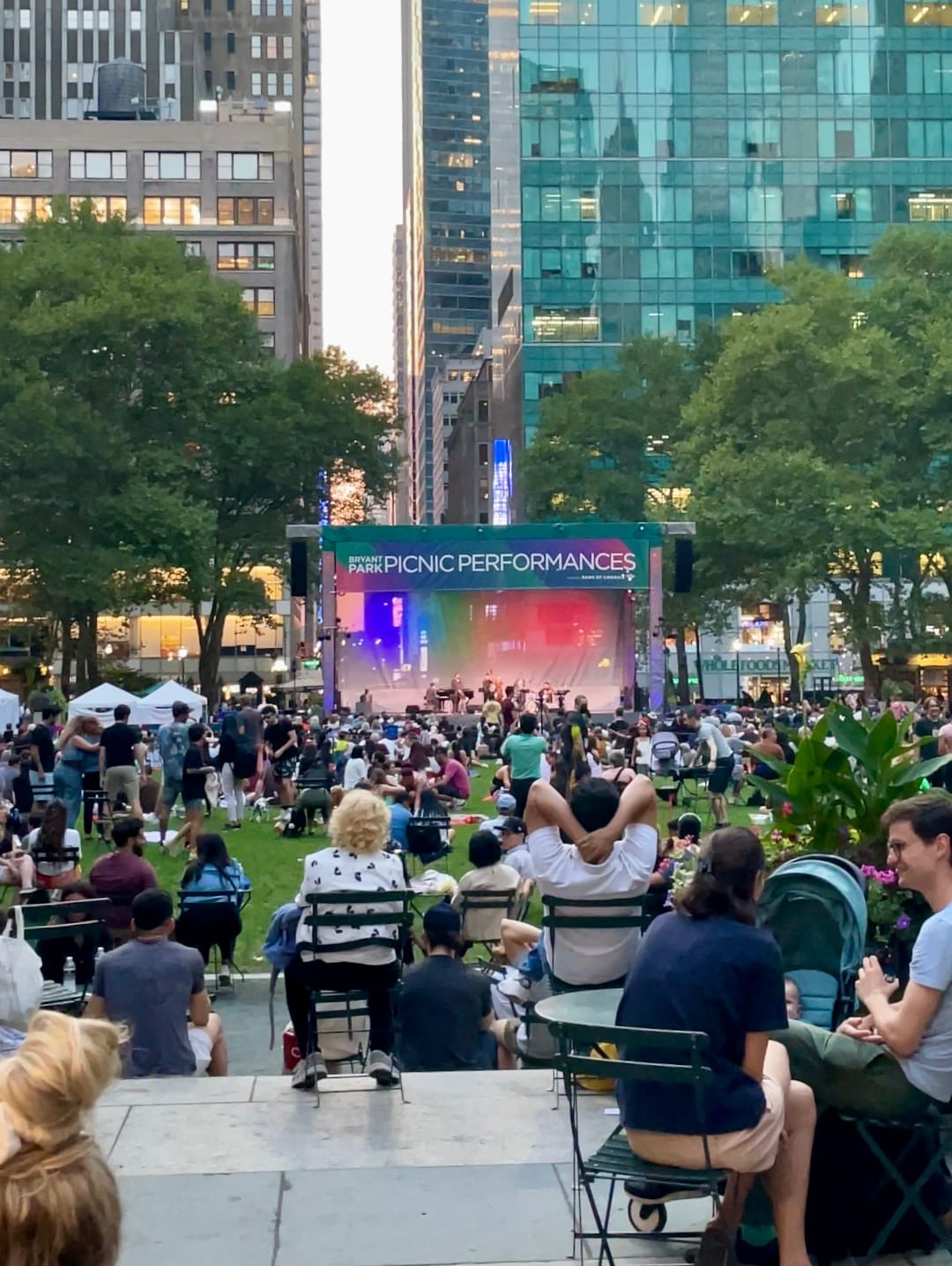
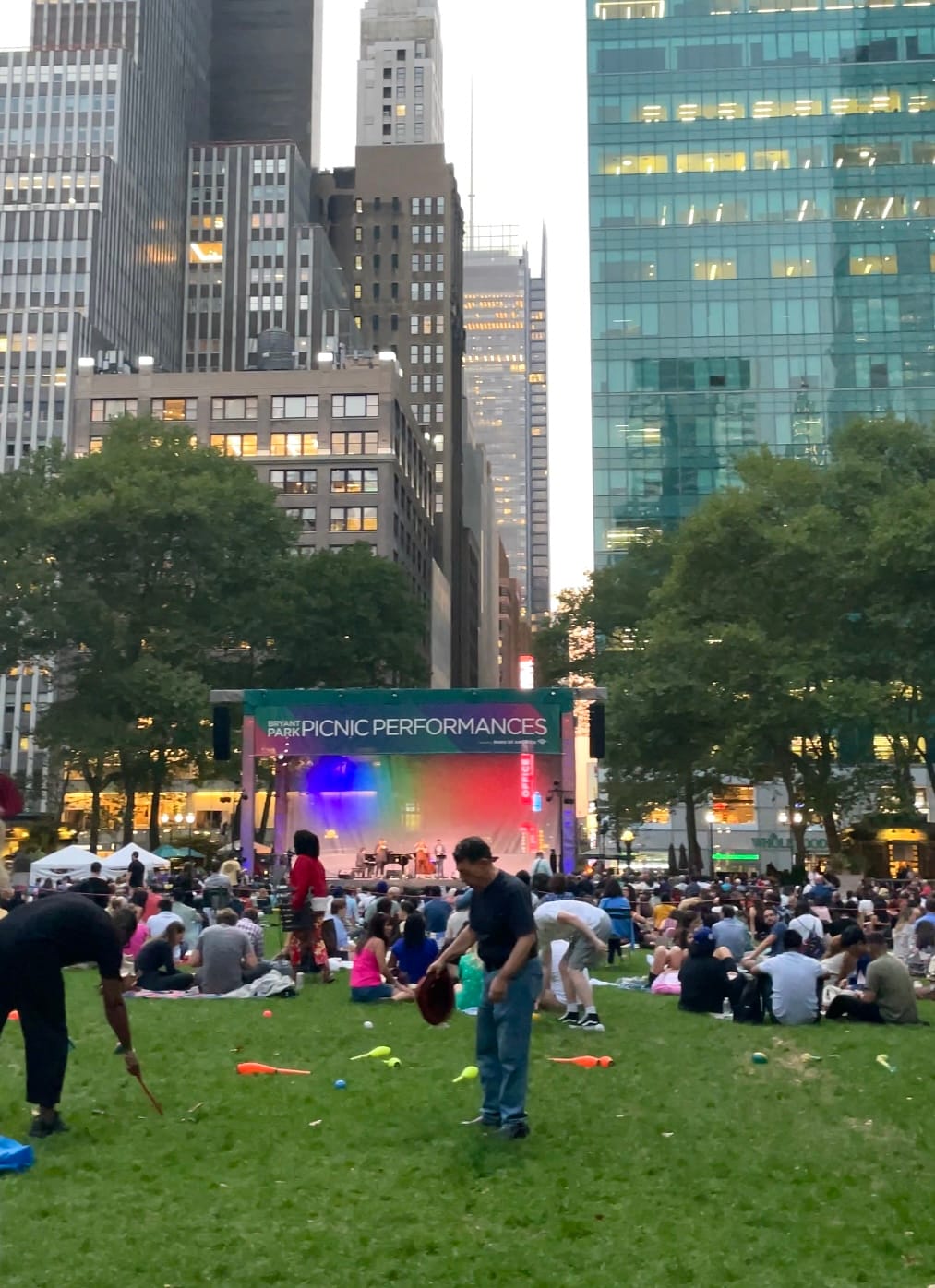
Ice skating rink
In the winter months, the grass of the lawn is replaced by ice. An ice skating rink is set up to take the edge off the cold and gives people something to look forward to even during the gloomy season. Skaters laugh, glide, and fall, then take well-earned breaks at the adjacent lodge where hot cocoa can be found. The rink and Christmas market, plus the central location of it all, make Bryant Park the epicenter of New York's holiday celebrations.
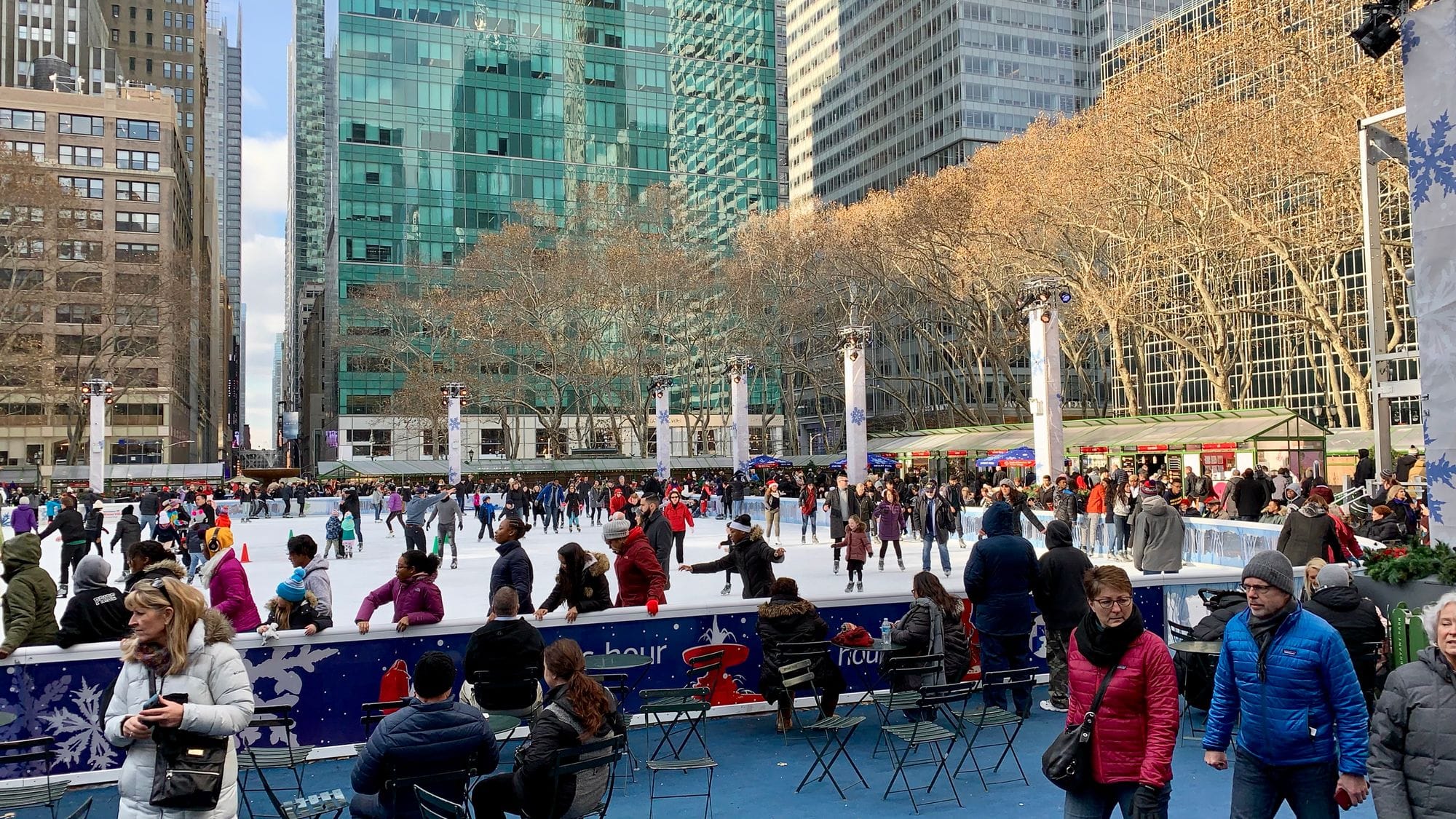
Christmas market
Bryant Park's market is one of NYC's holiday highlights. With its charming booths full of all kinds of artisan crafts, souvenirs, and treats, it brings a wave of joy and energy to the park every year, as well as helping support small businesses. The great thing about the Christmas market is how it weaves through the whole park and surrounds the main attraction of the ice skating rink so foot traffic flows in all directions.
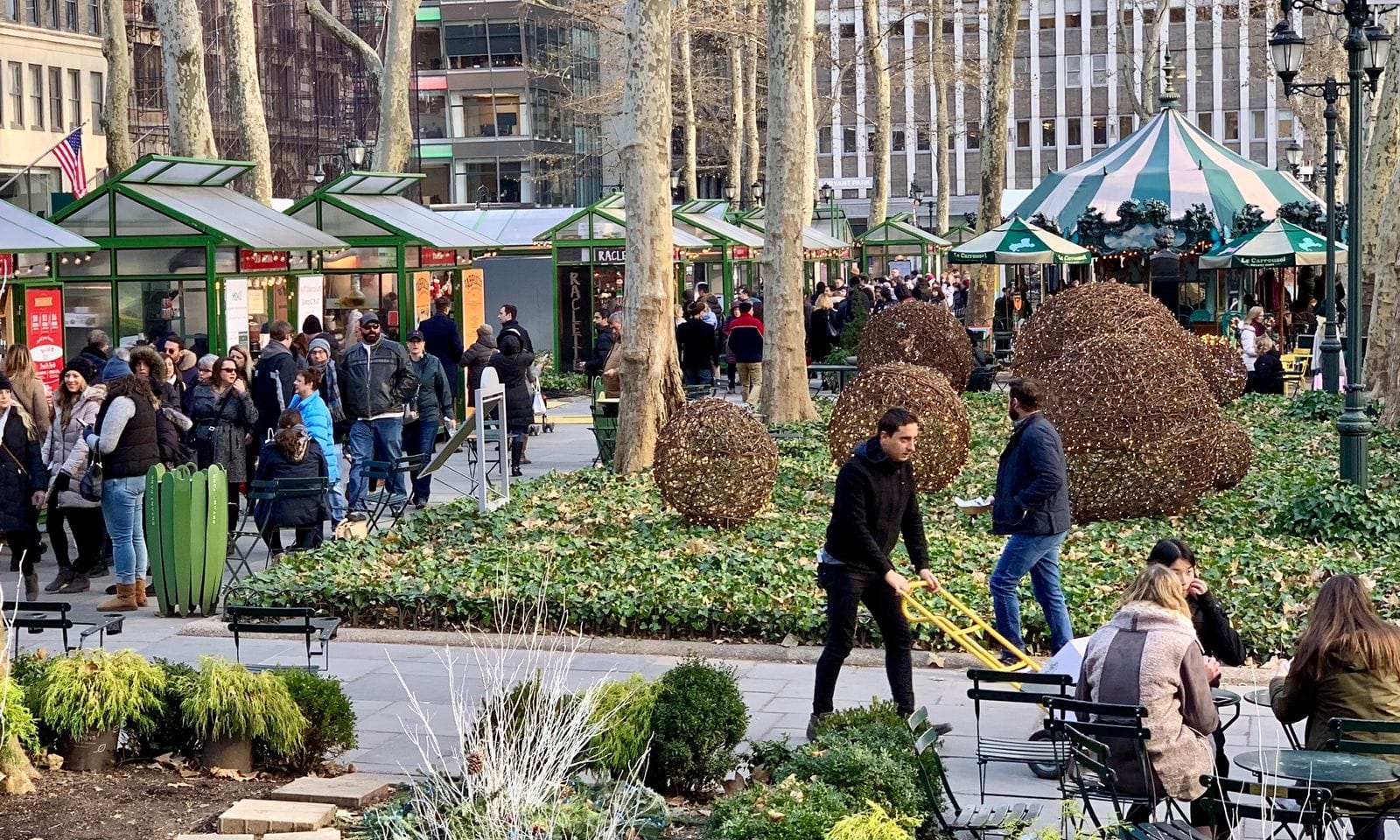
Little library
Colorful book shelves on wheels and seating areas under umbrellas in this part of the park are a wonderful activity to take part in for people of all ages. The outdoor "reading room" encourages reading, connecting, and spending time in the fresh air while learning something new or pouring over an enthralling story. The space is welcoming for people to read alone, with a friend, or even in a reading group.
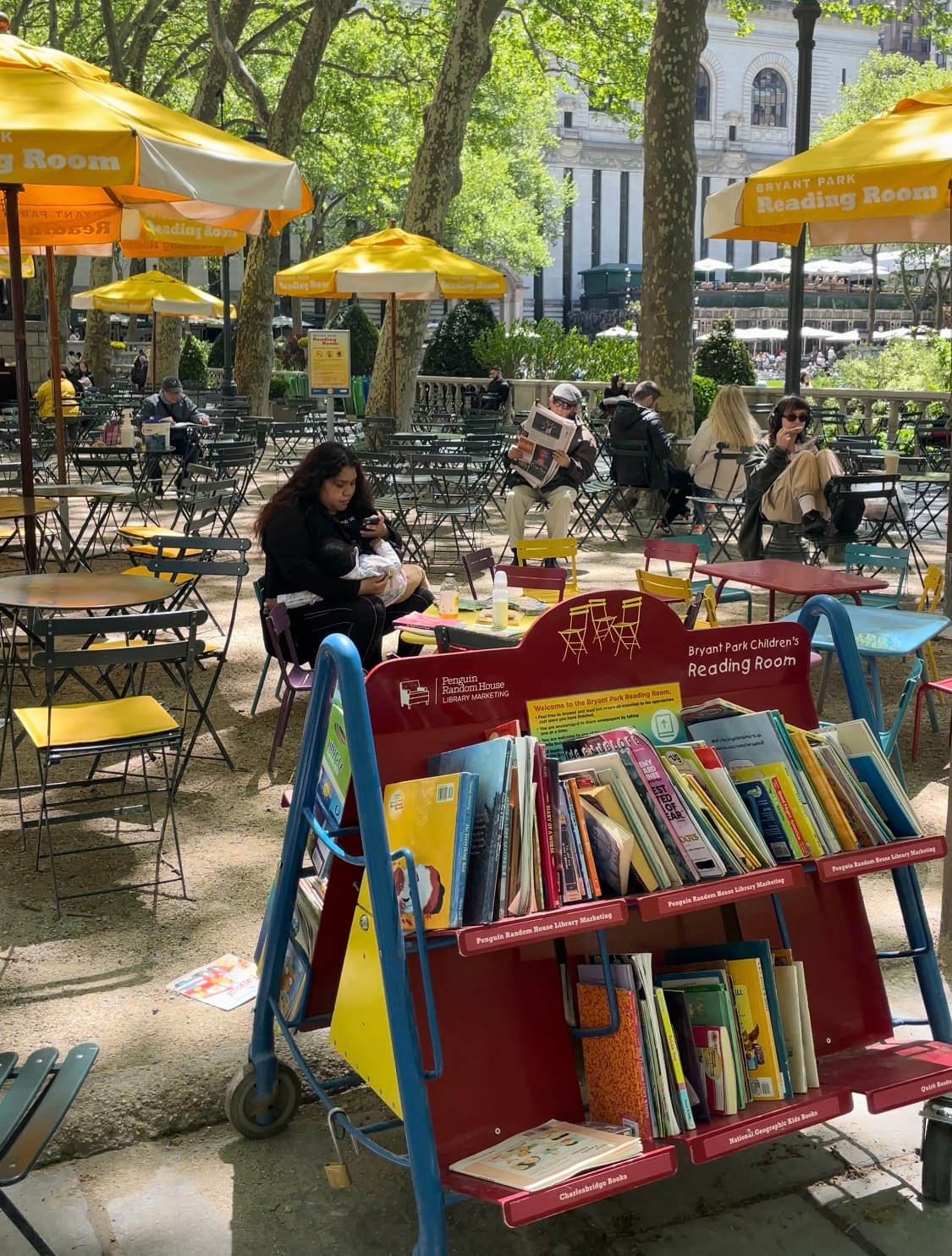
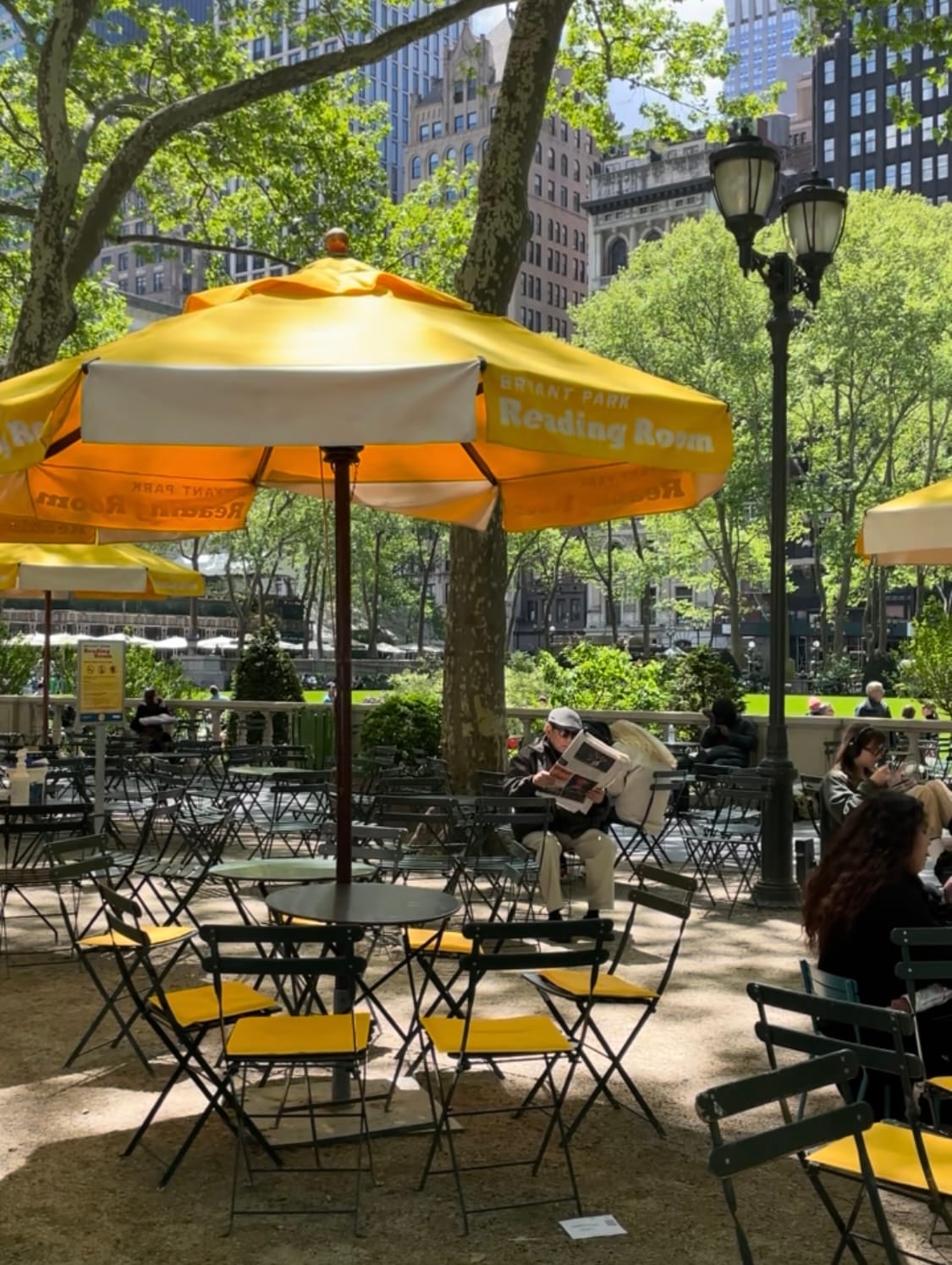
Ping pong
One of Bryant Park's staples is its ping pong tables where you can see people of every age and background facing off against each other in friendly competition. Ping pong is a great activity for a public space because it is safe, simple to play, and welcoming for people at all ability levels.
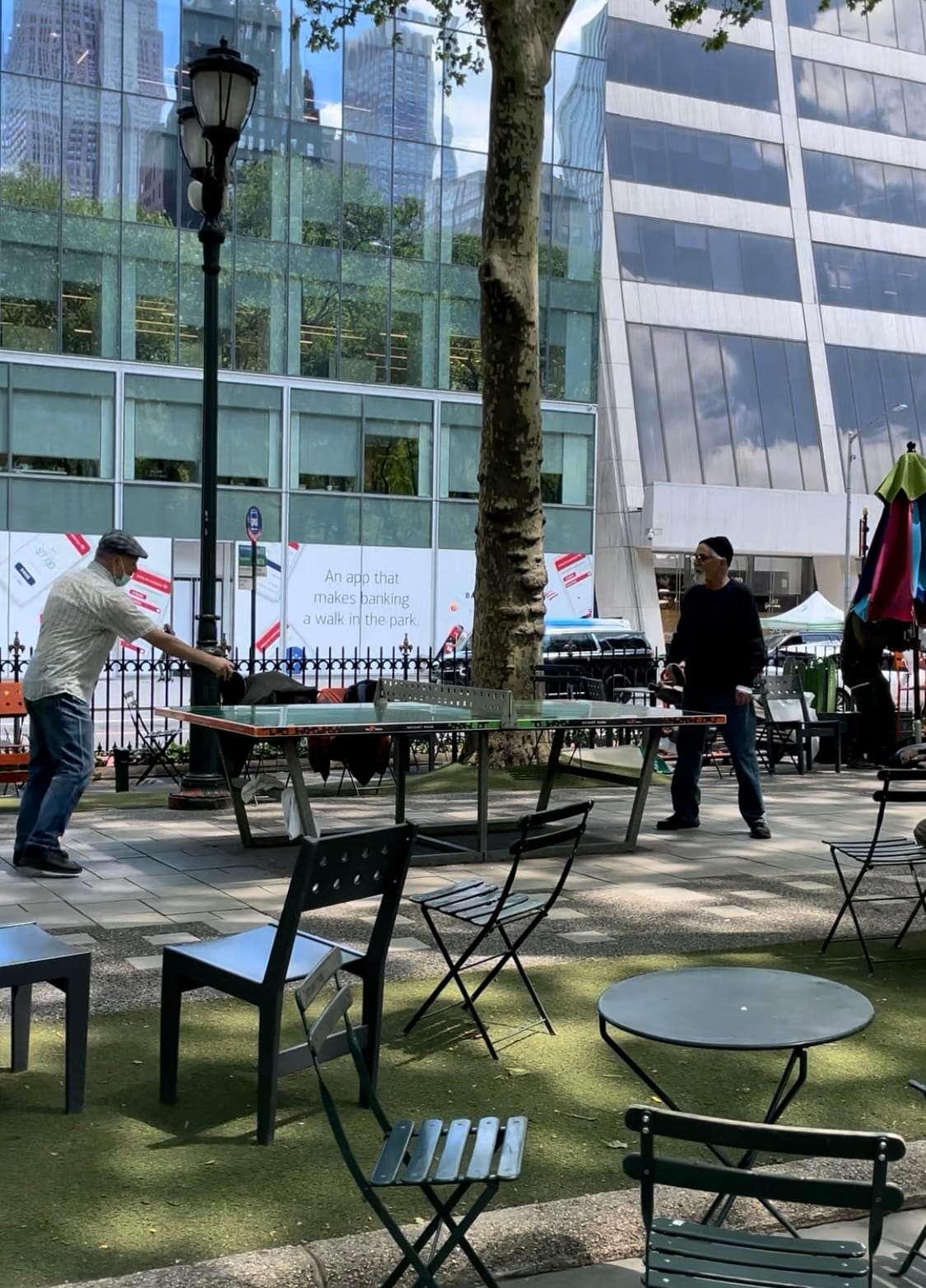
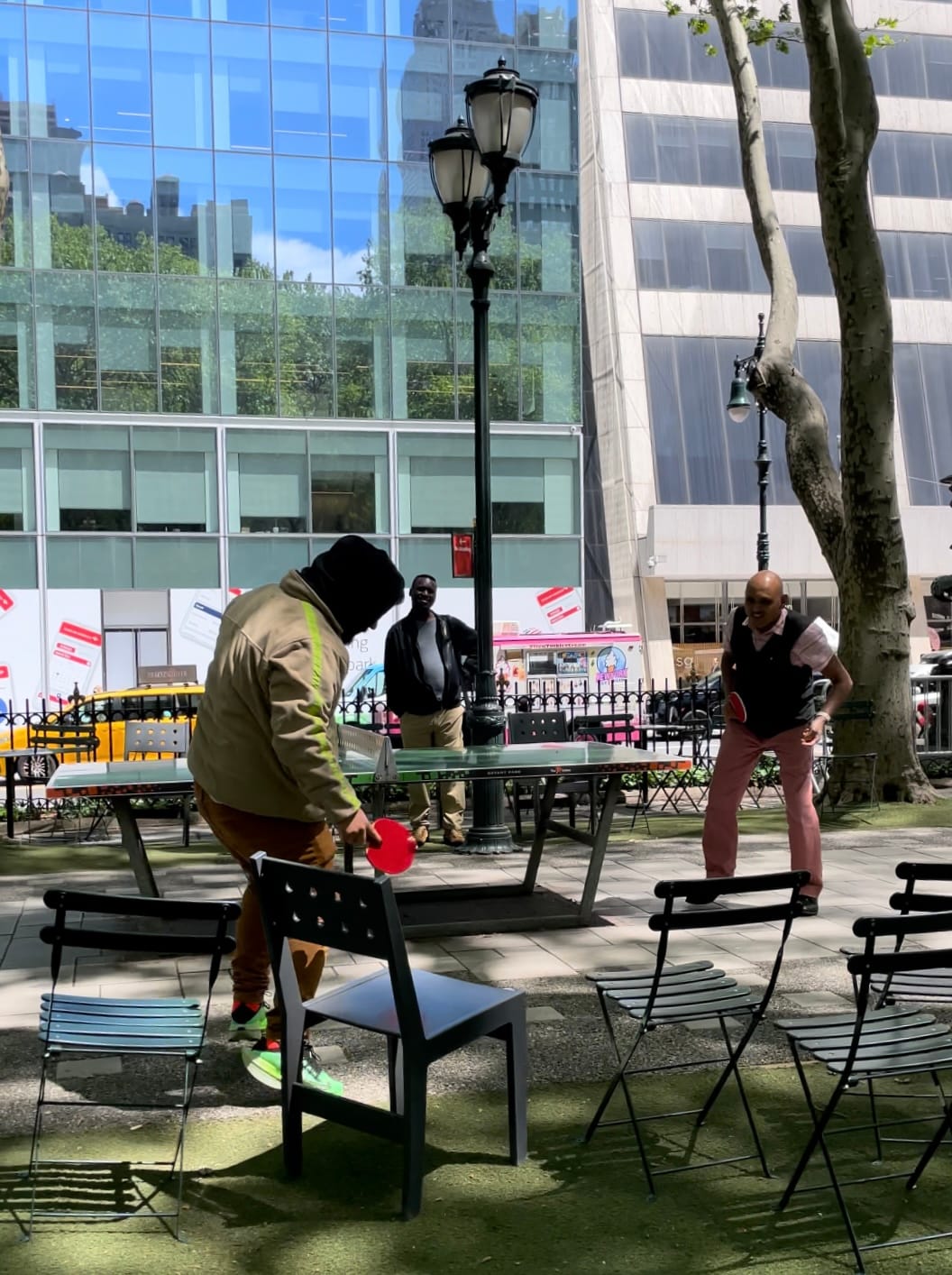
Petanque
A great public place needs to offer activities for every segment of the population. Too often, elderly people are overlooked when activities and play areas are introduced. Games like petanque are fun and accessible for people at every age. The petanque courts in Bryant Park are always in full swing.
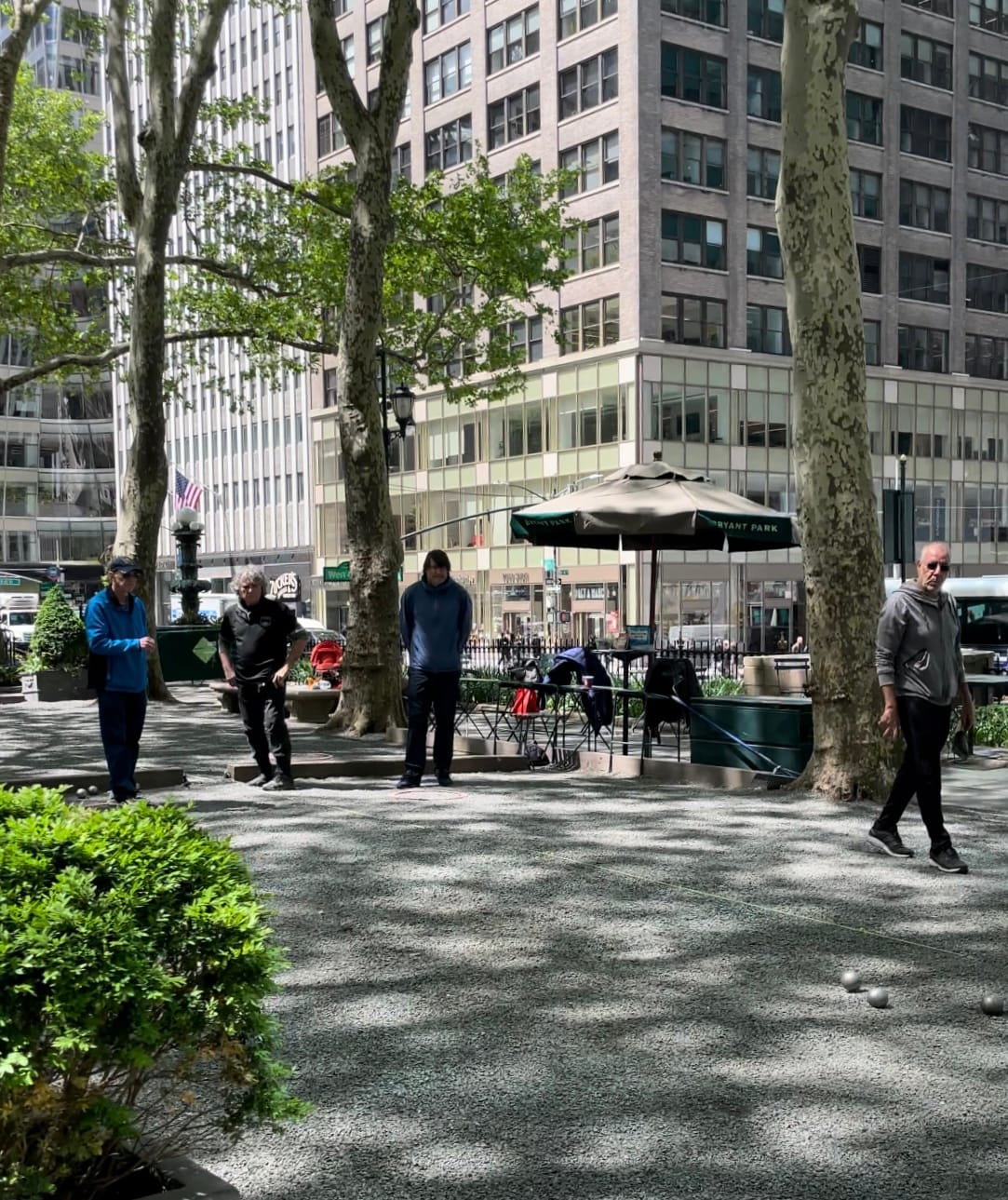
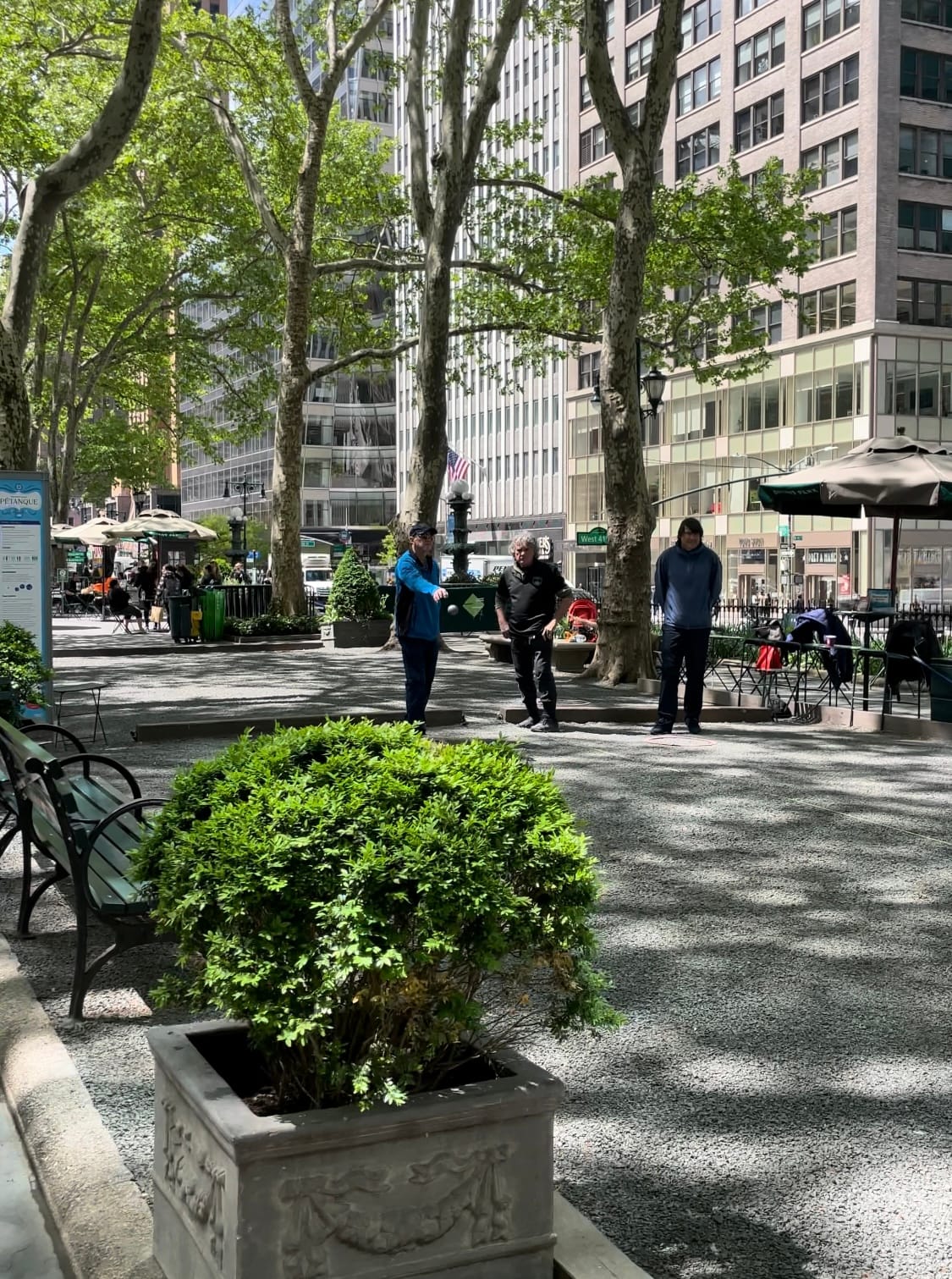
Juggling Club and other classes
One of the most unique and fun offerings in Bryant Park is its famous juggling classes. You can often catch people spinning and twirling colorful batons throughout the year as they learn skills to master their juggling.
With its plentiful space to stretch and move about, the main lawn is a perfect venue for hosting other kinds of classes as well, like yoga or dancing. You'll often here a teacher's voice calling out steps from the stage as hundreds of eager attendees follow along on the grass.
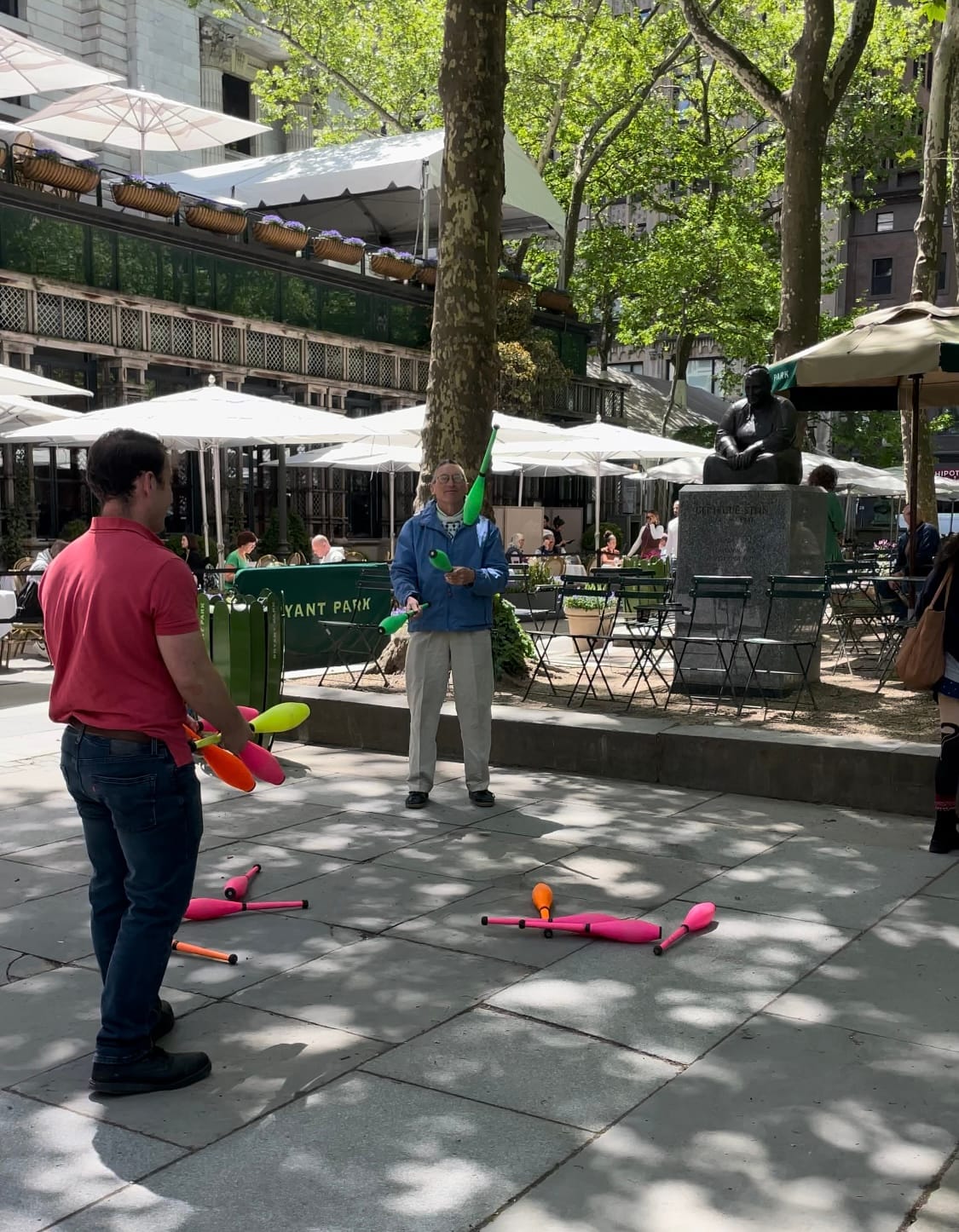
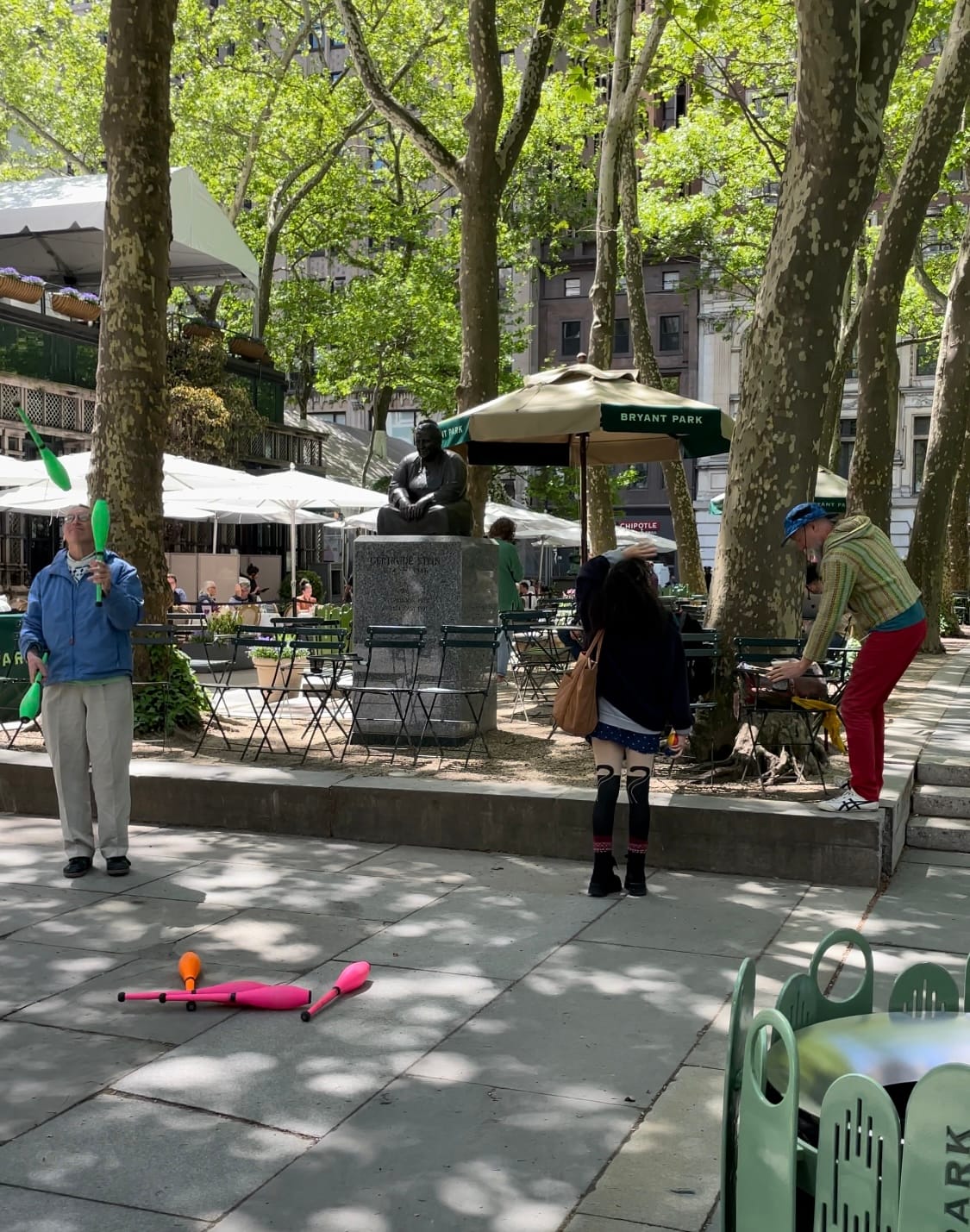
Game corner
One of Bryant Park's most beloved programs is the Game Corner where all kinds of board and card games are offered for people to play together. What's more, the park regularly hosts Game Socials to encourage people to connect and make friends with other board game enthusiasts.
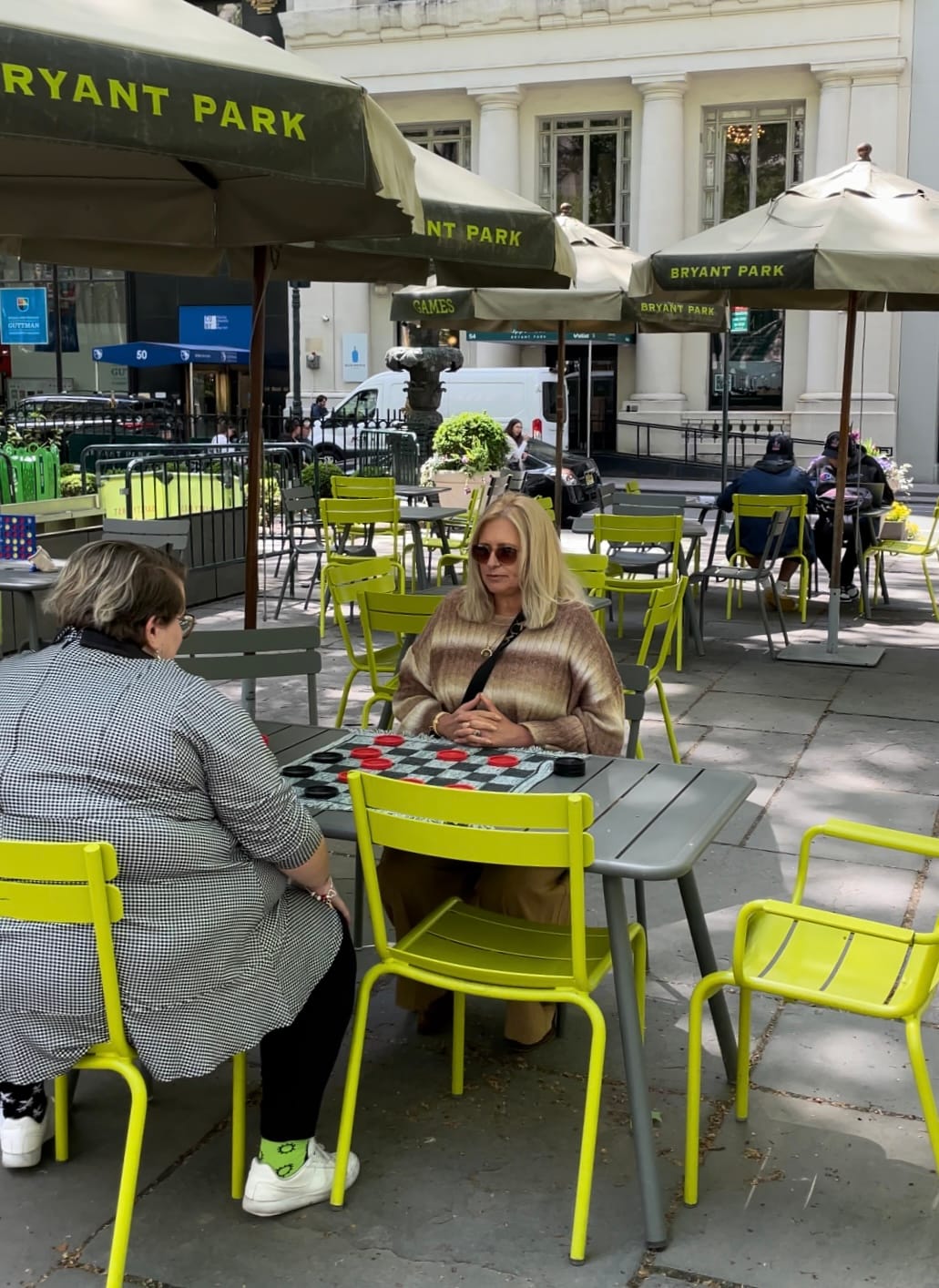
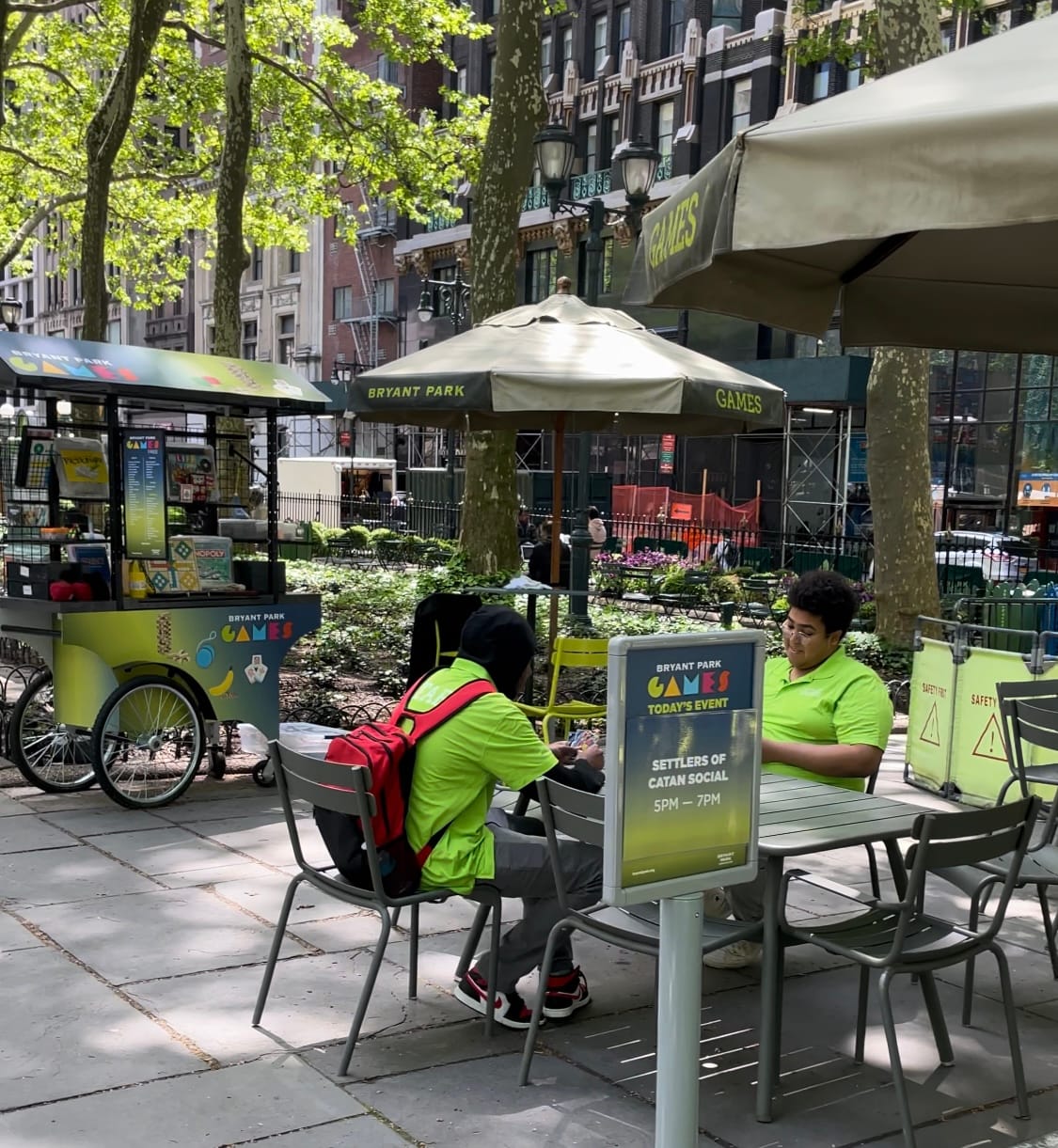
How to make other public places great
One way to make public spaces work is by being naïve – not knowing what you can't do and just doing it because it feels right. Much of what was done to Bryant Park fifty years ago would not have been possible later as the city planning agency became defined by professional planners and designers who would bring in "expertise" rigidly defined by siloed industry standards. The formal approach that is the norm today lacks creativity, versatility, flexibility, and dynamism. It stifles improvisation, change, and freedom.
Today, we believe this approach of only listening to "experts" is the main reason why we have seen so little excellence in the creation of public spaces over the last 25 years. That is why we always say "the community is the expert" and "if you think you're done, you're finished" because striving for a perfect, professional, final state of a place is misguided and does not produce greatness.
Bryant Park is a fantastic example of what happens when you shift your focus away from what a public space should look like and turn your focus toward what it should feel like, what kind of activities it hosts, and how it invites people to take part in them.
When we recommended opening up Bryant Park's borders to make it feel inviting, highlighted its assets, added a number of activities and programs for people of every age and interest to take part in, the park came alive with activity and visitation. Today Bryant Park is the beating heart of Midtown Manhattan and recognized as one of the best public places in the world. Other places can replicate its success through the tried and true process of Placemaking.
Pleasure Gardens
